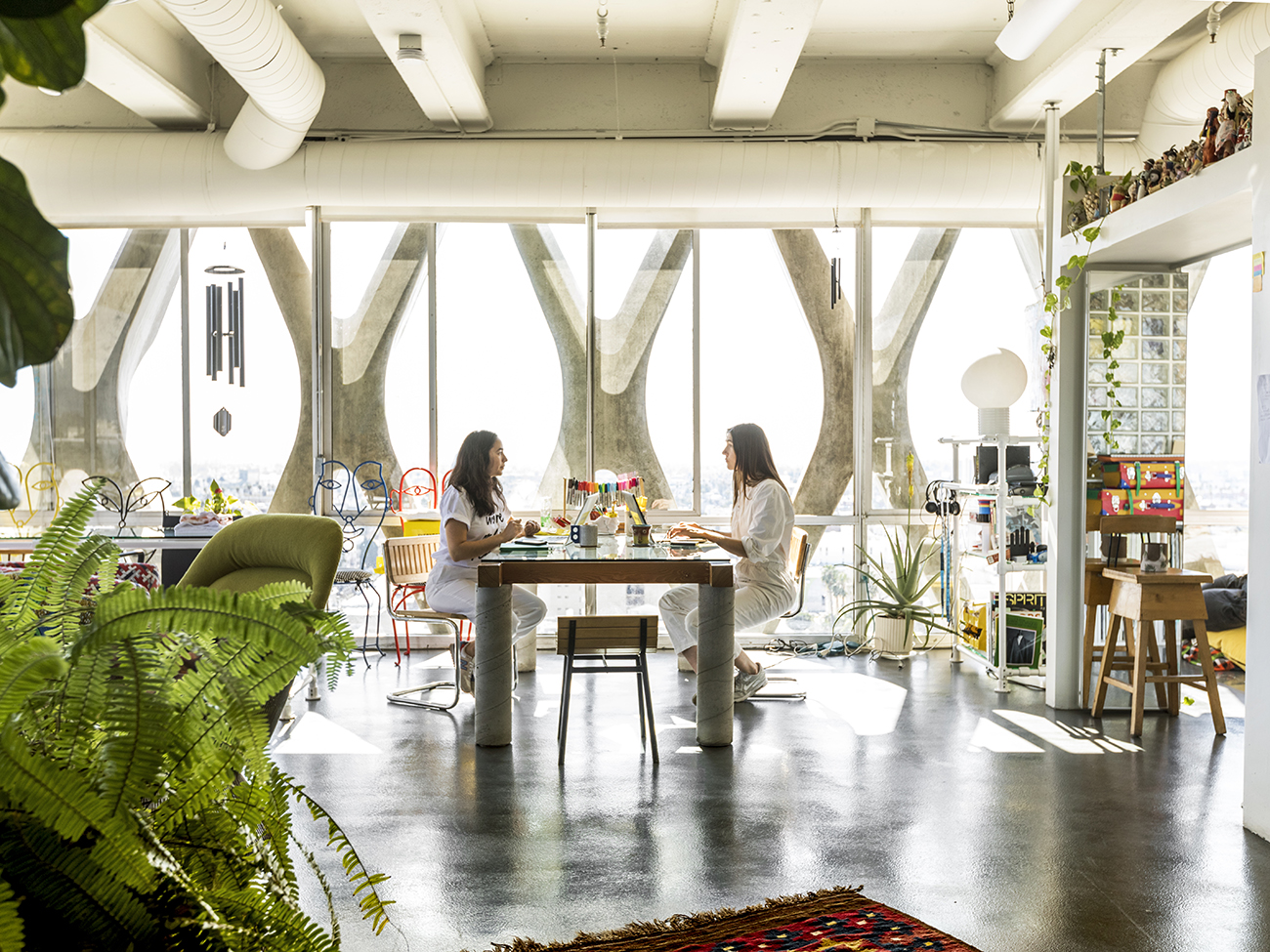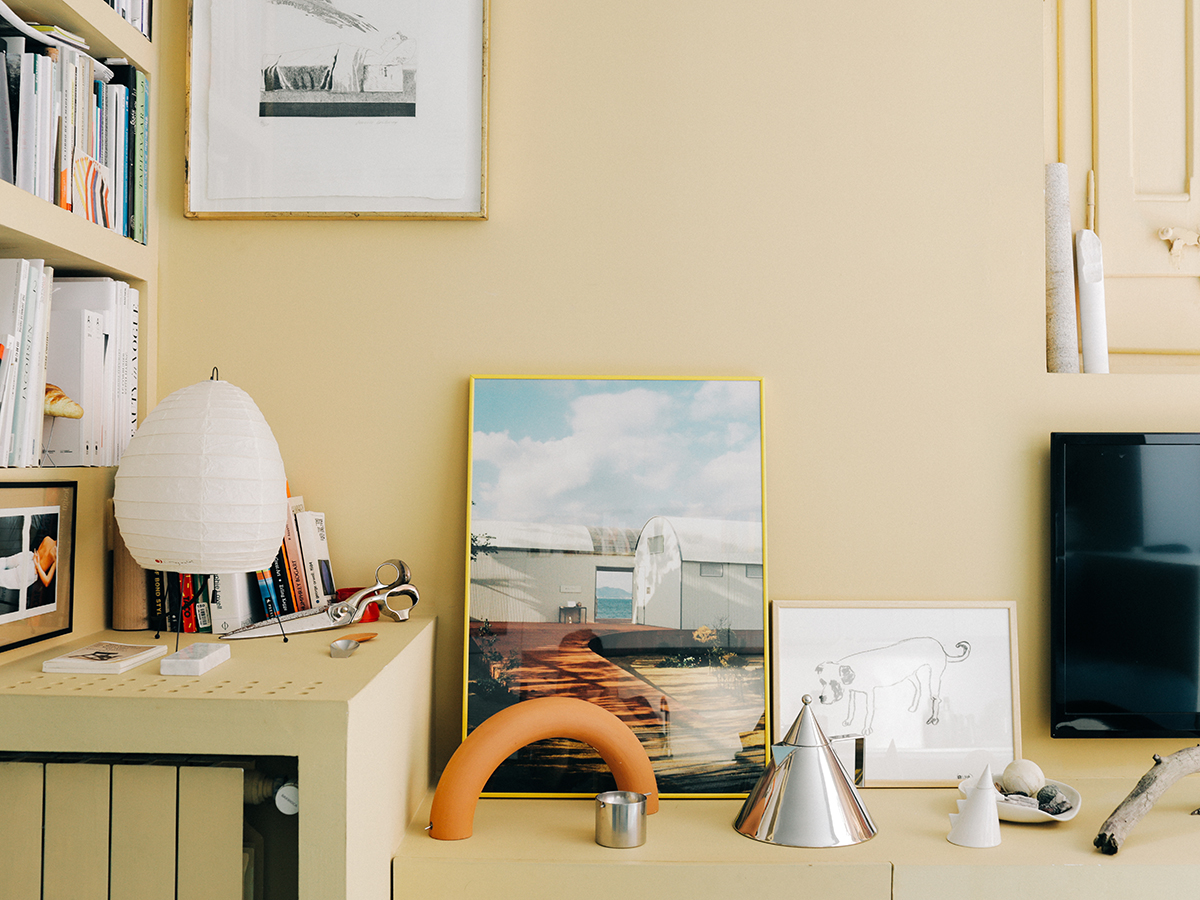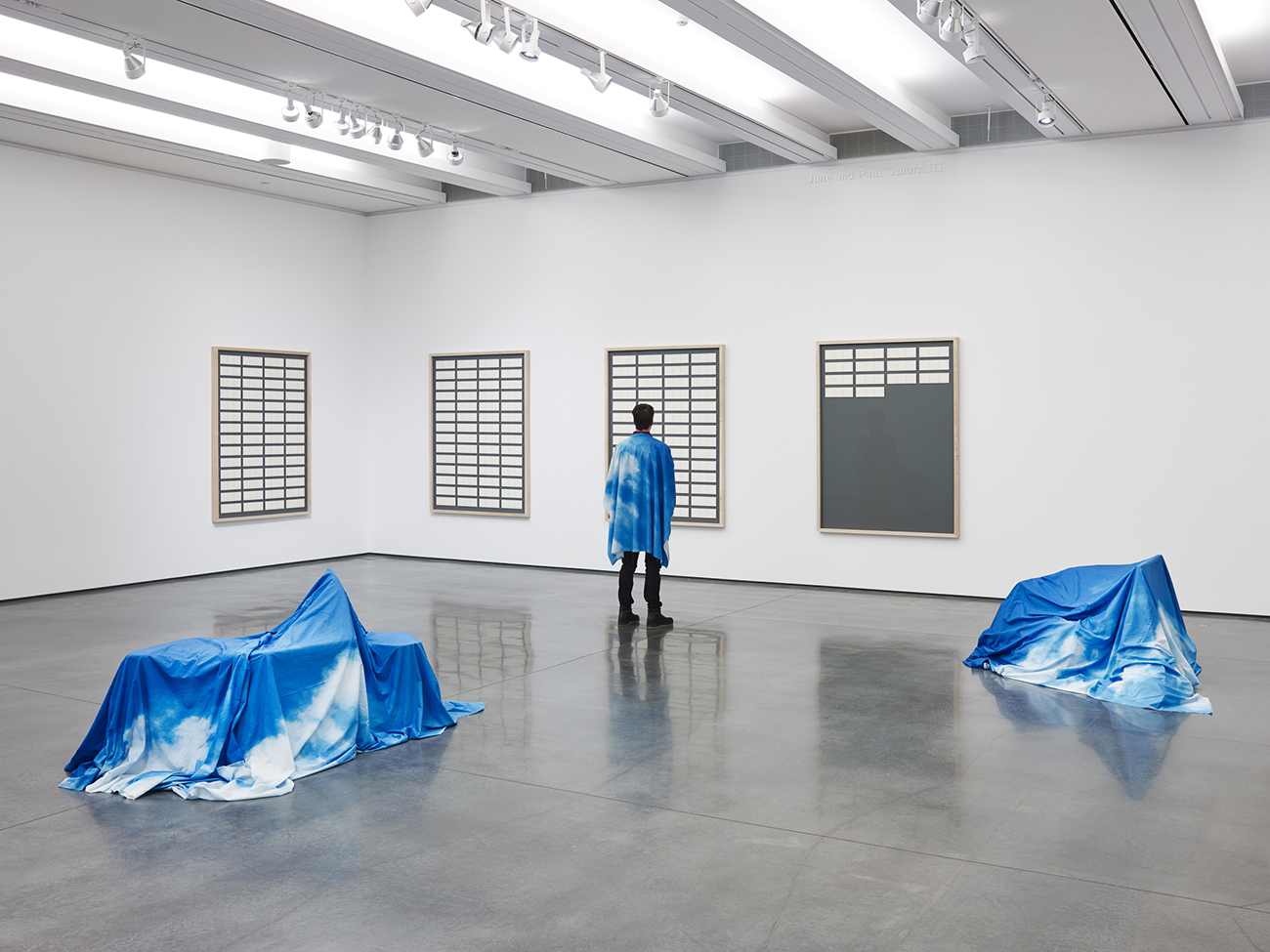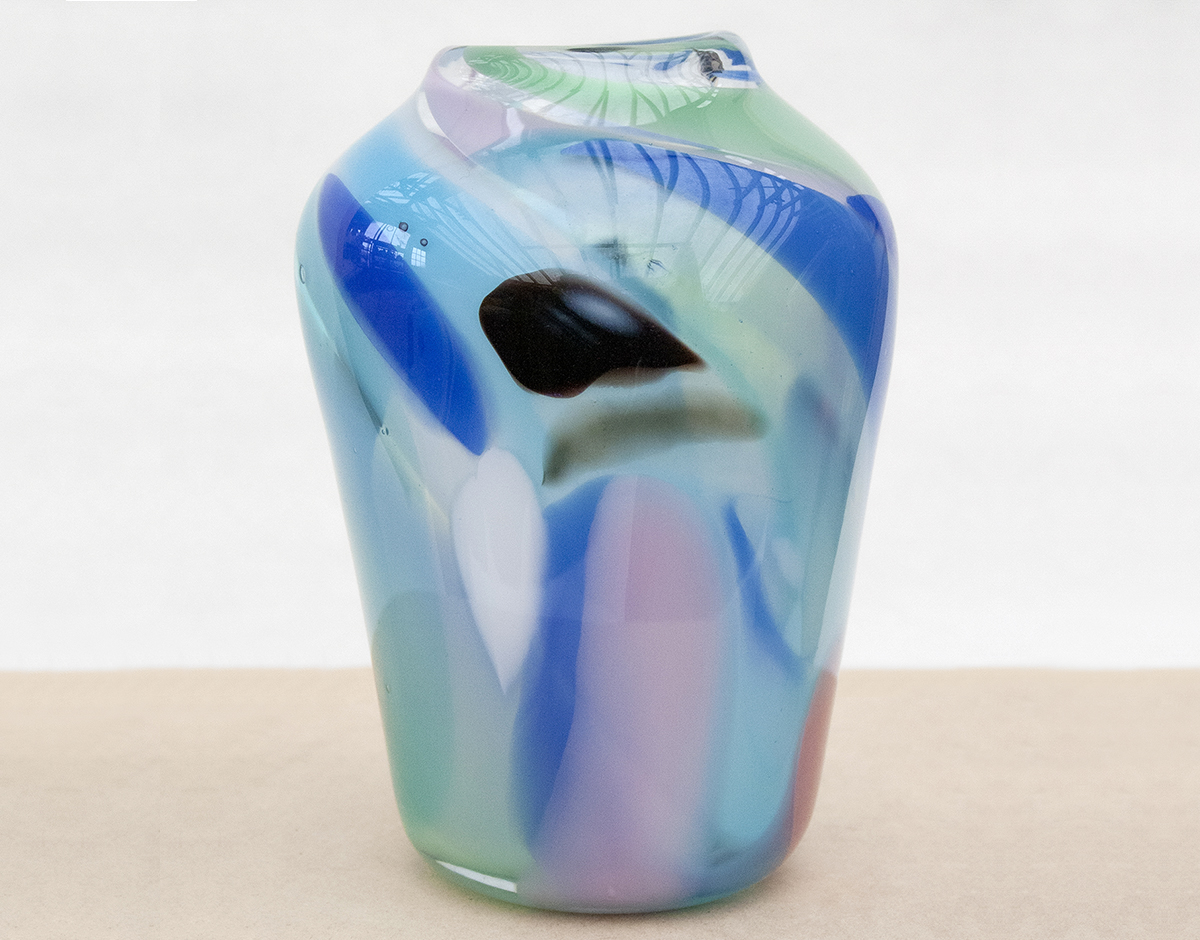
04.05.21
Q+A
Peter Gudrunas Has Been Blowing Glass Since the 1970s. Now His Daughter is Helping to Bring Their Practice Into the 21st Century.
In a rural setting on the shores of Lake Erie, Ontario, Peter Gudrunas has been blowing glass vessels at his studio, Sirius Glassworks, since the early ’70s. Working from a handwritten recipe book, the majority of his craft — vases, cups, and decorative plates — is made from scratch in the Venetian tradition using raw materials such as powdered quartz and limestone, cobalt, and cadmium, a technique that is incredibly rare this side of the Atlantic. Gudrunas became known for his bold combination of jewel-tone colors, painterly markings, and classical forms crafted with hand tools in a furnace powered by natural gas on his property. At his most prolific, he had around 90 galleries across the US and Canada, and a catalog of wholesale wares.
“I design from scratch. I don’t really work from paper or images. I really just work out of my head,” says Peter. “It’s utterly intuitive. Probably like any artisan, you spend so much time, and you have a compartment in your brain that’s automatic. I react physically to glass. My hands are guided automatically and then I’m free with the artistic process — very free.”
The 2008 financial crisis wiped out the majority of Gudrunas’ clients, and in the following years the interest in buying fine crafts sputtered. It wasn’t until 2014 that the business was revived, when his youngest daughter, artist and filmmaker Iris Fraser-Gudrunas, stepped in to manage, eventually developing a vision for how Sirius Glassworks could evolve. Aware of the rarity of her father’s level of skill and experience, as well as his sprawling facility, Iris was compelled to design pieces for a younger generation with a renewed interest in handcraft.
Encouraging her father to break the rules of his rigorous practice by embracing experimentation and imperfection, Sirius Glassworks collections now include bubbly rosé pink vases, ethereal iridescent tumblers, and exuberant pieces in tropical colors with swaths of sparkling dichroic, sunset gradients, and pastel patterns, which can be purchased via their online shop as well as stores and galleries such as 100% Silk and Likely General.
“I’ve been struggling with that forever, so I guess I’m a little bit stodgy that way,” says Peter. “It’s been great working with Iris. One other thing I discovered more through her is there’s a certain adulation people have towards artists. I kind of understood it, but it really hit home — it’s quite amazing. It’s so important [to be discovered and appreciated by a new generation]. You have to keep reinventing yourself. But, designing new work…I’m comfortable with that. I have a backlog of things I haven’t made yet. I have one color I’ve been chasing for 40 years!”
We spoke to Iris about reigniting her father’s art, the tension of injecting a contemporary sensibility into a centuries-old artistic practice, and keeping the craft alive for future generations.
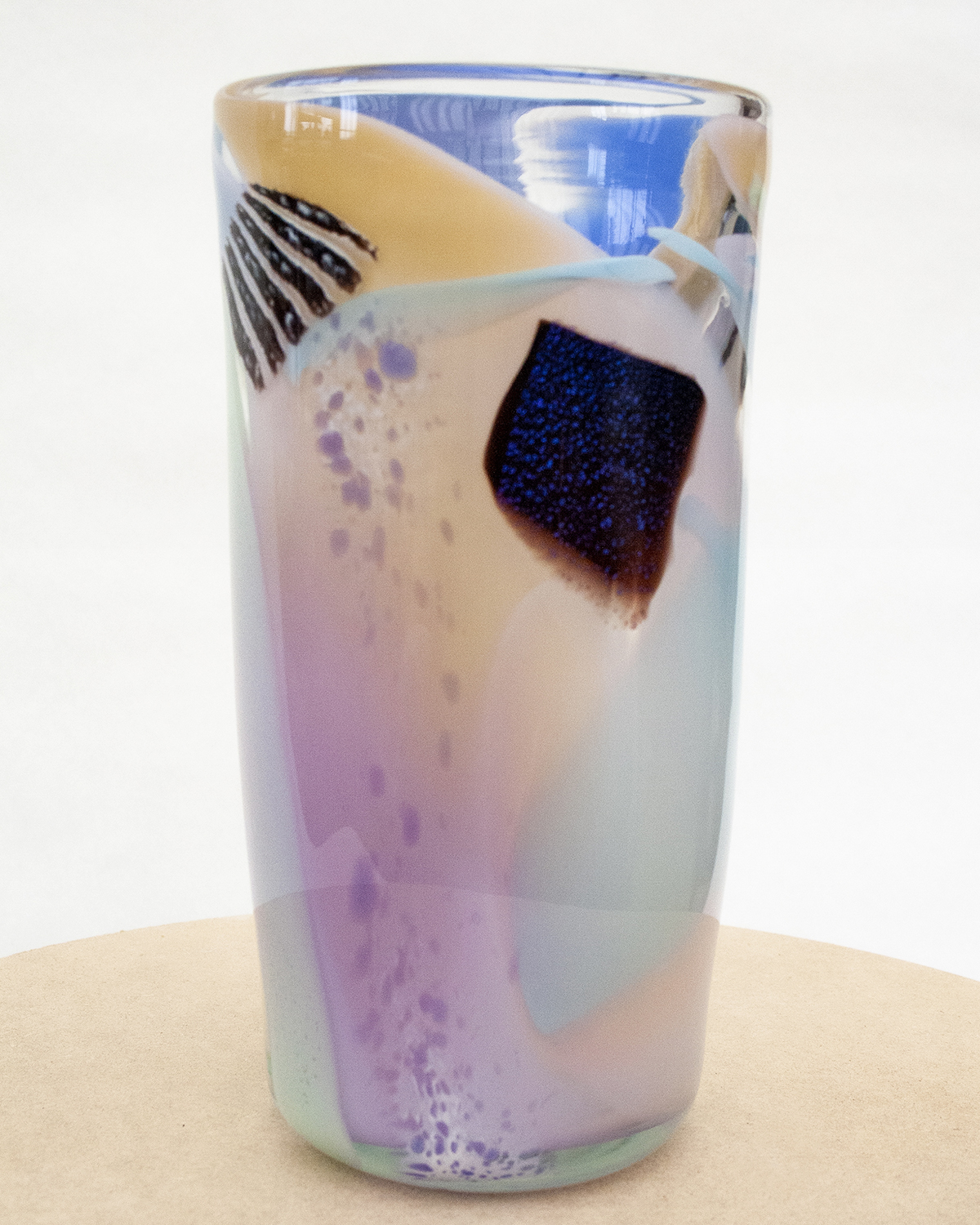
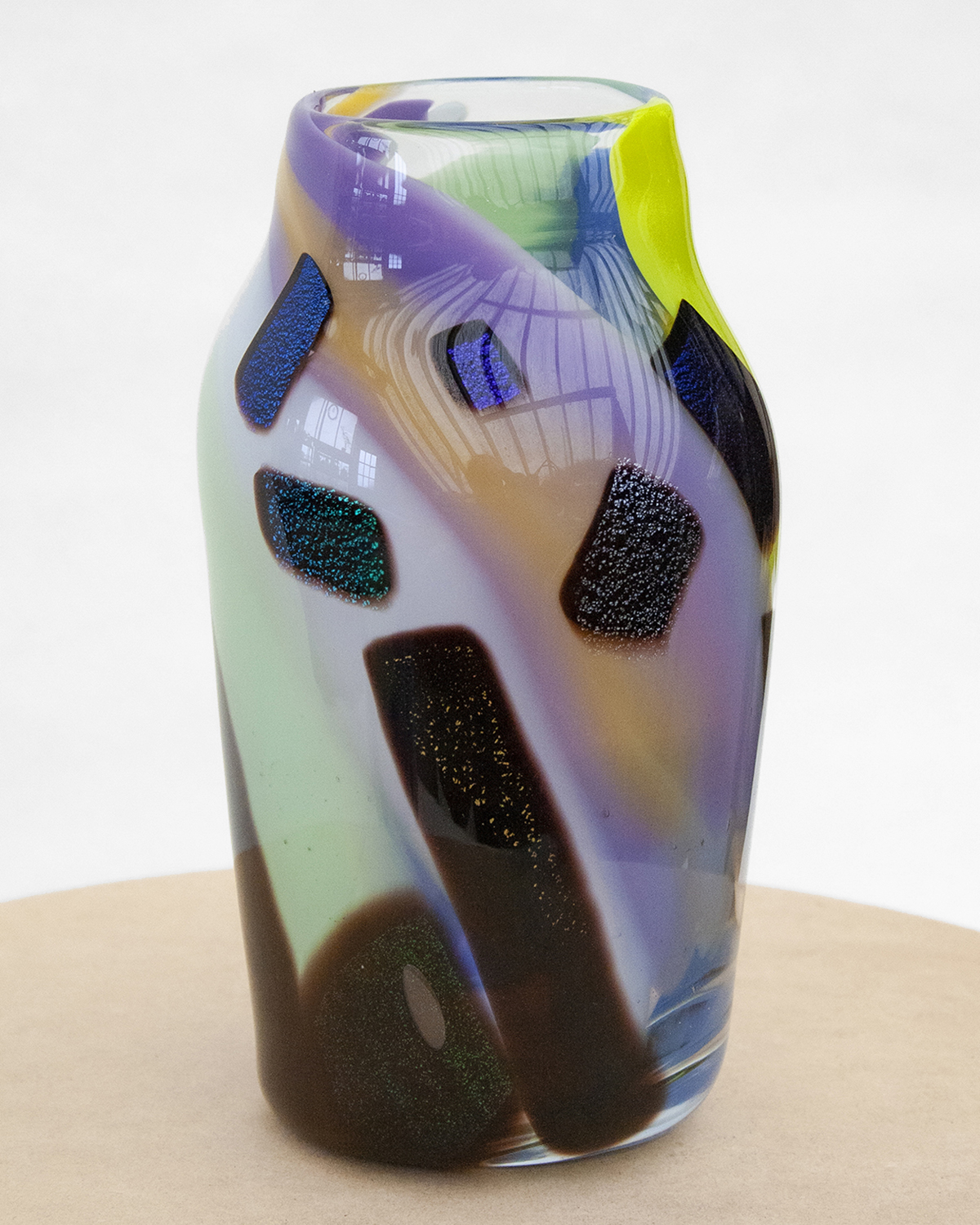
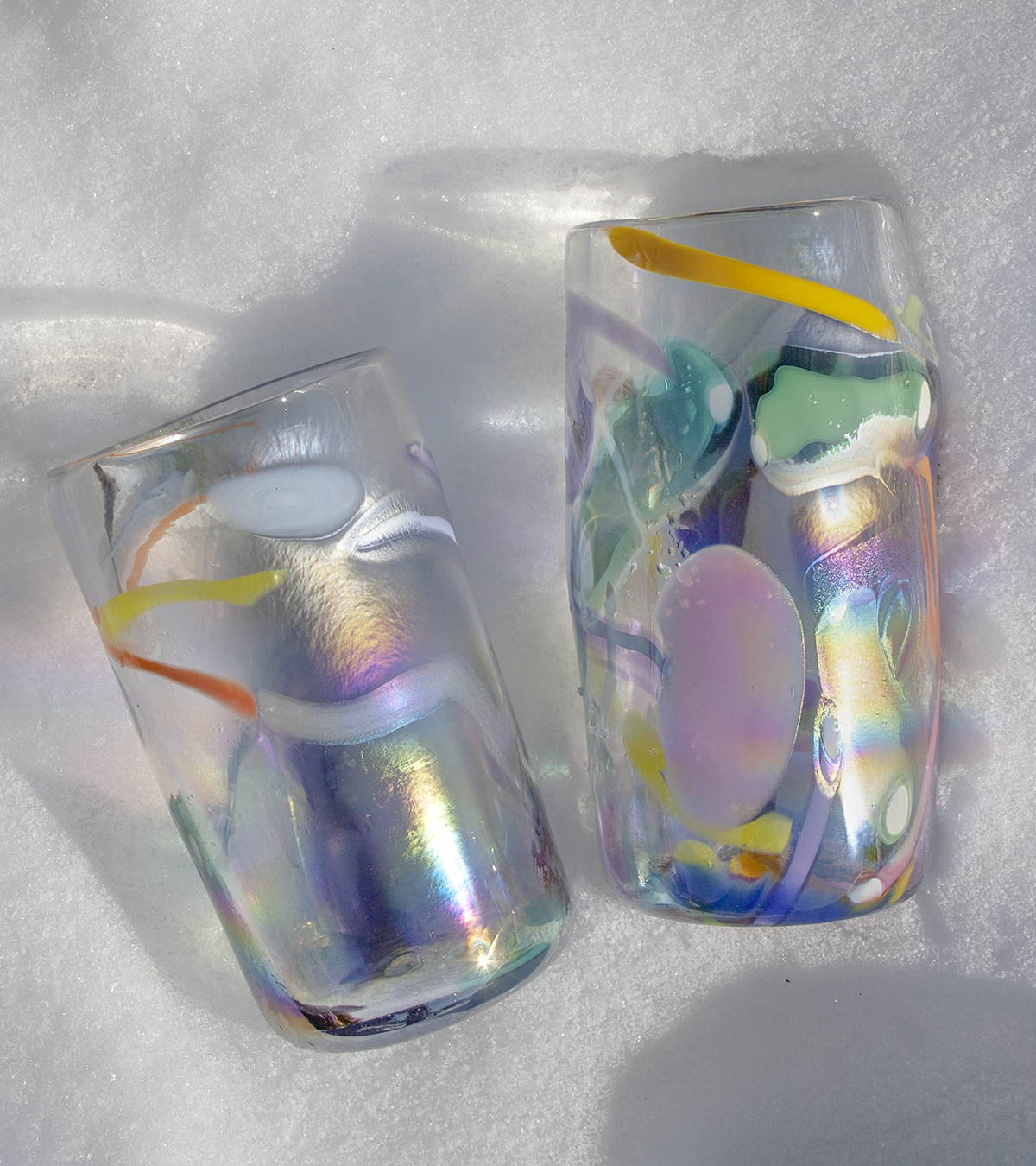
Part of the more recent “Nassau” line, designed by Iris and made by Peter
What Peter does is so unique in the scope of glassblowers…glass artists? What’s the correct term?
He’s a glassblower. The distinction between glassblowing and other glass work is you have hot glass, and you have cold working, like stained glass is cold working. A certain amount of glass casting is cold working because it’s just melting [into a mold]. Flame workers are people that do the little stuff with a torch. Glassblowing itself is in the Venetian style like they do in Murano.
And what’s also so special and rare is that he’s making glass completely from scratch.
He’s one of the unique people in North America to make his colors from scratch, which is something that started off as a necessity. The beginning of the craft renaissance and the Studio Movement for glassmakers in Canada was in 1972 with two specific teachers. They were in the first class ever with, like, five students. It was interesting because their teachers were just a couple of years older, so it was a lot of them teaching each other. There were no resources at the time, really. They were figuring it out themselves, building furnaces, and they had to get glass recycled from factories. So, they were learning how to make glass from scratch because they had to. It’s a very involved process. You’re reading, like, Victorian recipe books of nomenclature [laughs]. It’s pretty cool.
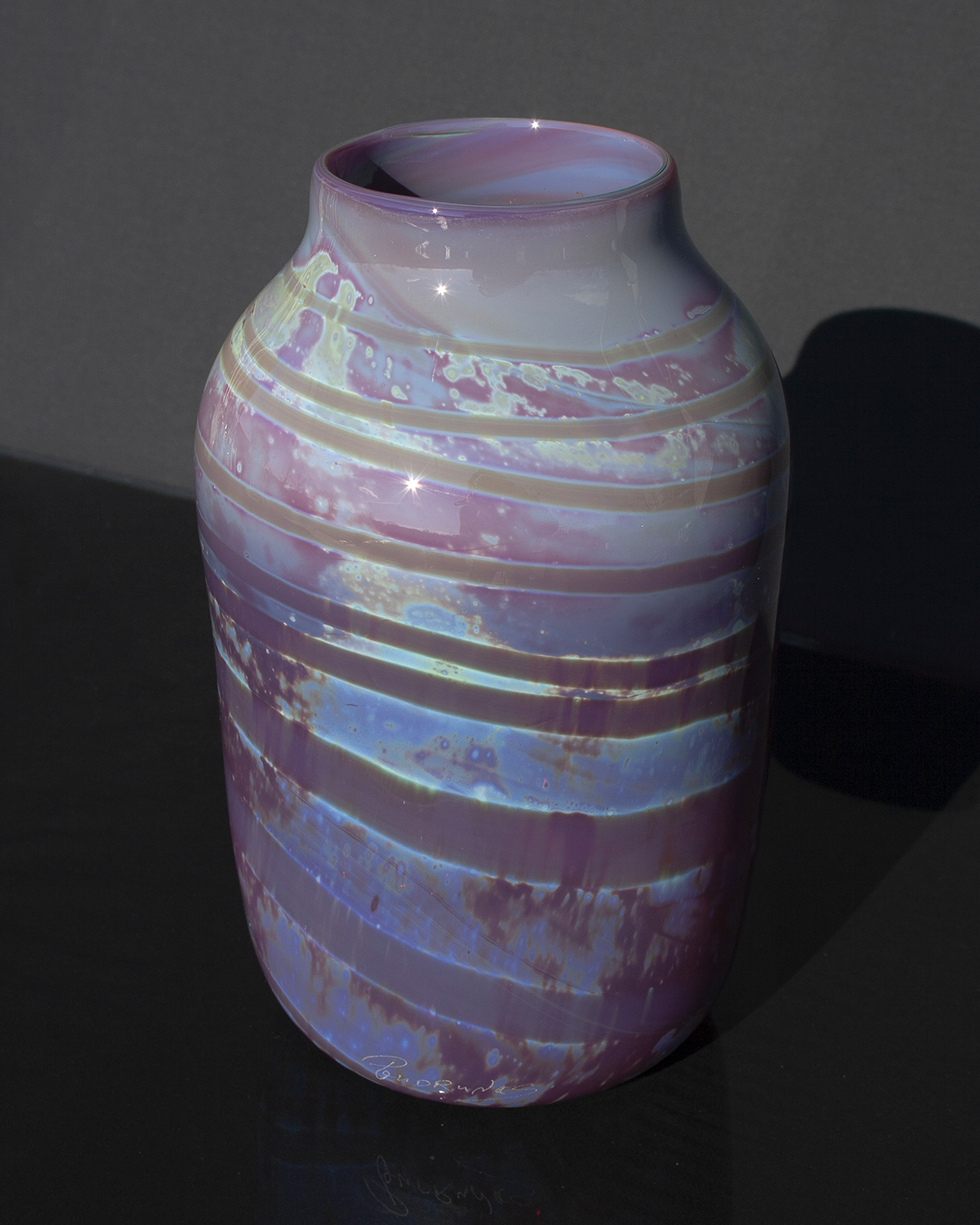
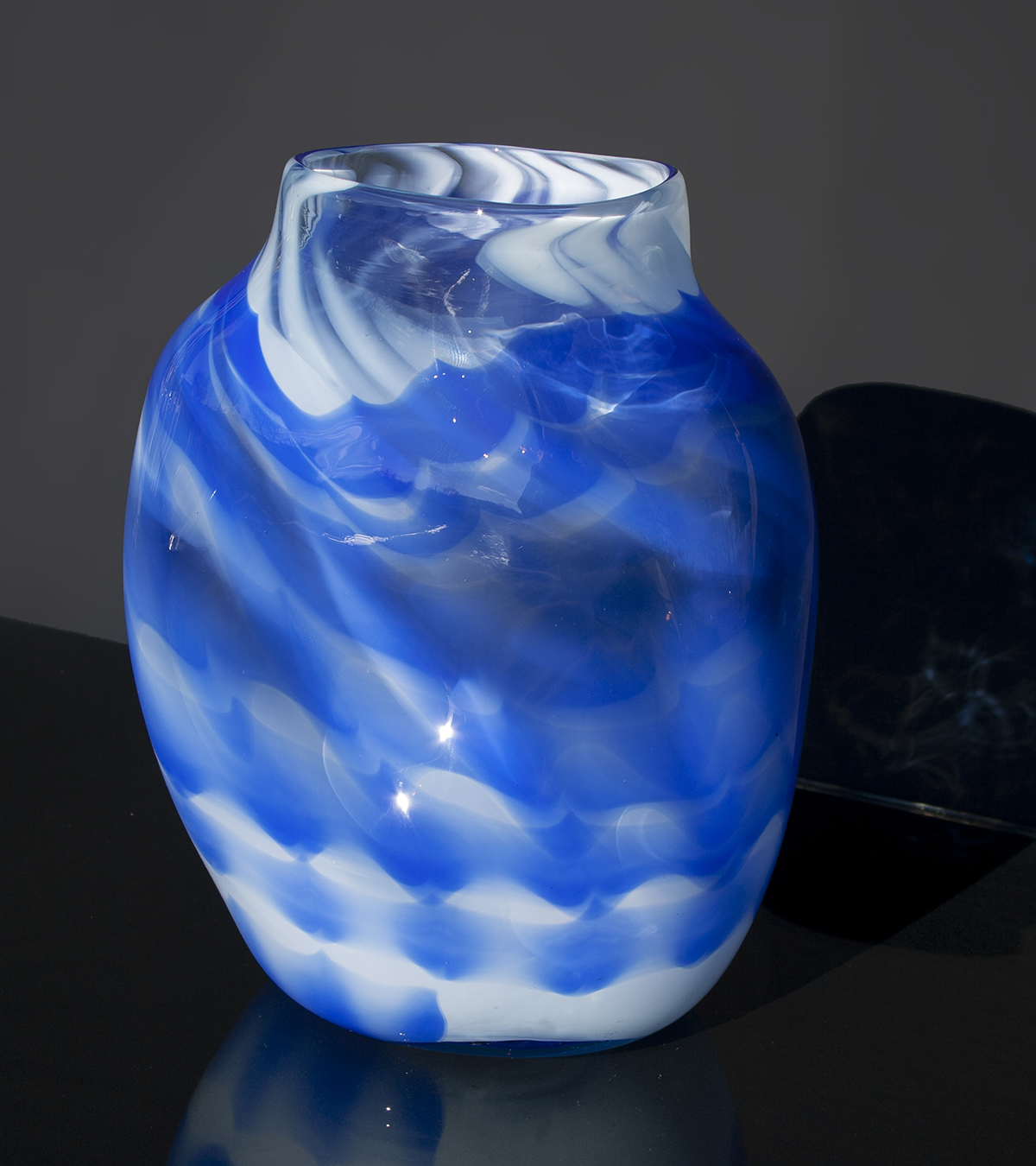
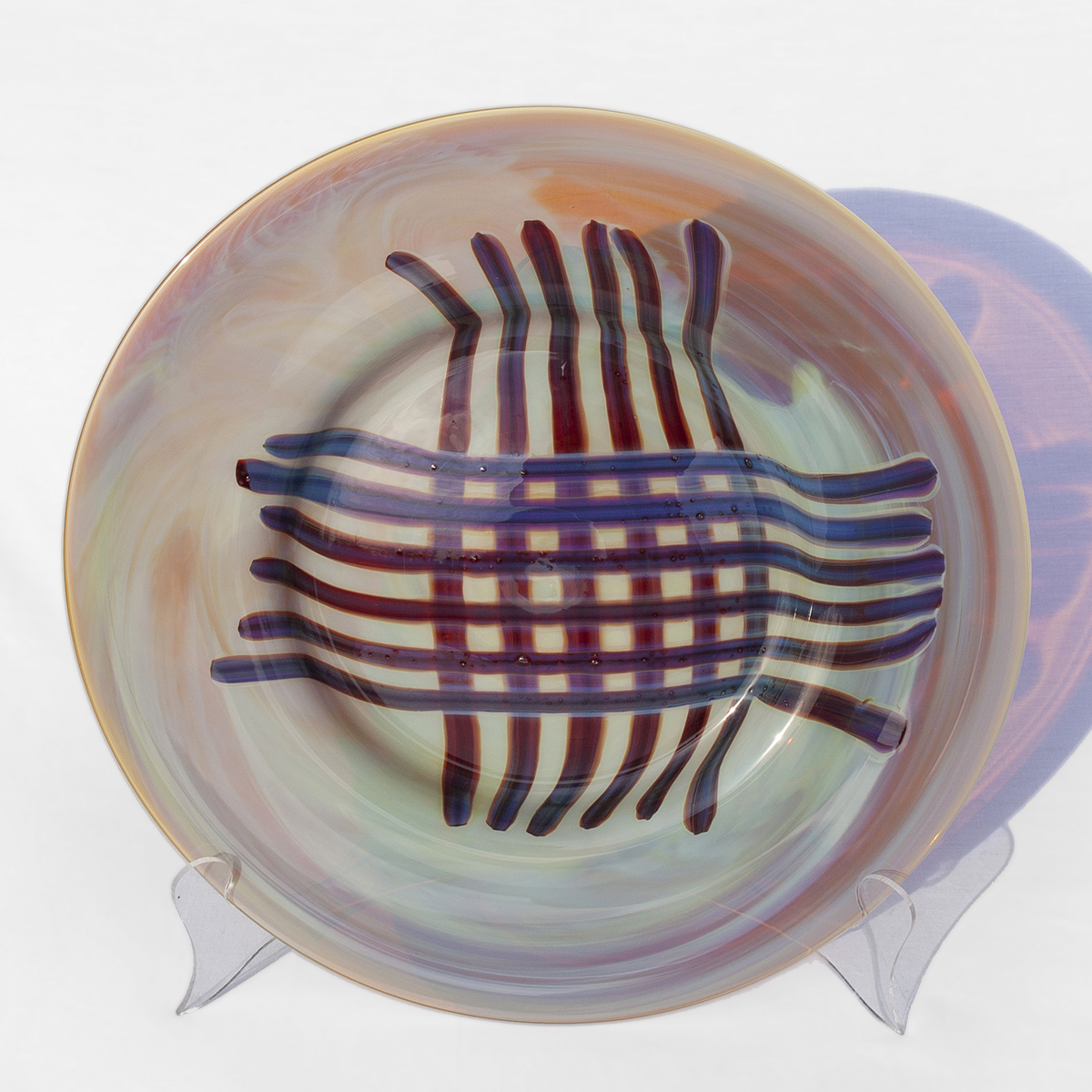
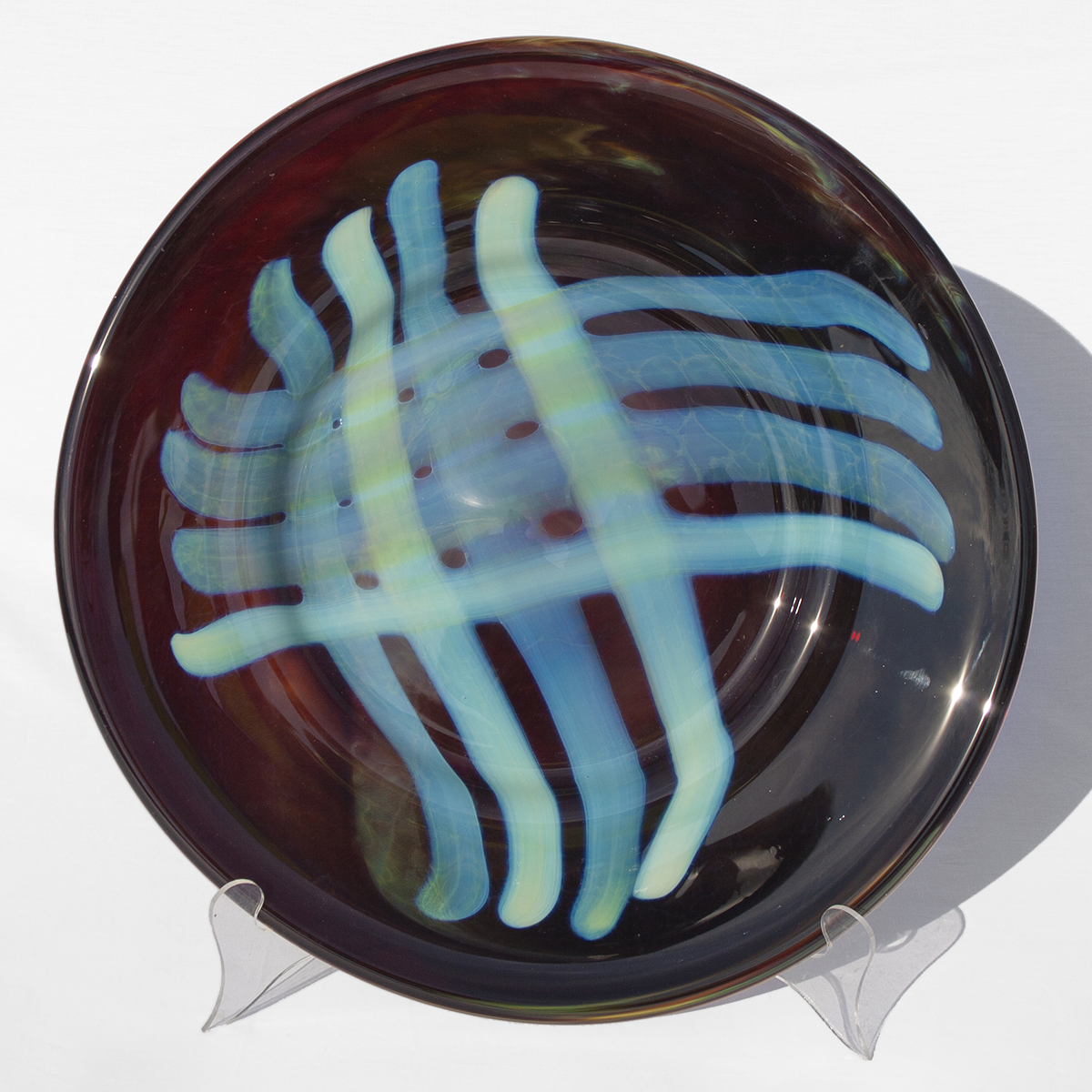
Older designs with colors made from scratch by Peter
What inspired your dad in the beginning when he was creating his own style?
It’s funny, because whenever anybody asks what inspires him, he’s like, “I don’t know?” [Laughs]. But I know at that point, a lot of those people were very into Art Nouveau, which glass really lends itself to because it’s got this droopy thing going on, and also a lot of the references at the time would be Lalique or even Tiffany. Studio glass was just kind of starting. They started out in the middle of Modernism. I think most of them learned that way because one of his teachers was Italian. It was a really vibrant time. They wound up influencing each other a lot and experimenting a lot. Another thing my dad talks about is the glass itself being the main inspiration, because it sometimes chooses what it’s going to be like. You can’t always control it enough to say, “I want it to be this thing.” It becomes its own shape, which is a lot of what we do now.
Since you started designing, you’ve really leaned into the personality of the glass, playing with asymmetrical forms, abstract patterns, and unconventional colors. How have you influenced your dad’s practice in that way?
With a lot of glassmakers, understandably, it’s this thing where you’re trying to harness this fiery molten stuff and there’s this interest in seeing how symmetrical you can make it. And my dad used to kind of be like that. If there’s one bubble [in the glass] he’s like, “We’re not selling it!” [Laughs]. But there is this really fluid, organic nature to glass. I explained to him: people want the stuff that looks more handmade, where you can see the process more. For while he was like, “What, they want uneven glass?!” He was very surprised. Not resistant, it was more like something he was relearning. But now he’s really gotten into it and it’s been nice to work that way because it means that there’s a lot more variants that come out and a lot more surprises.
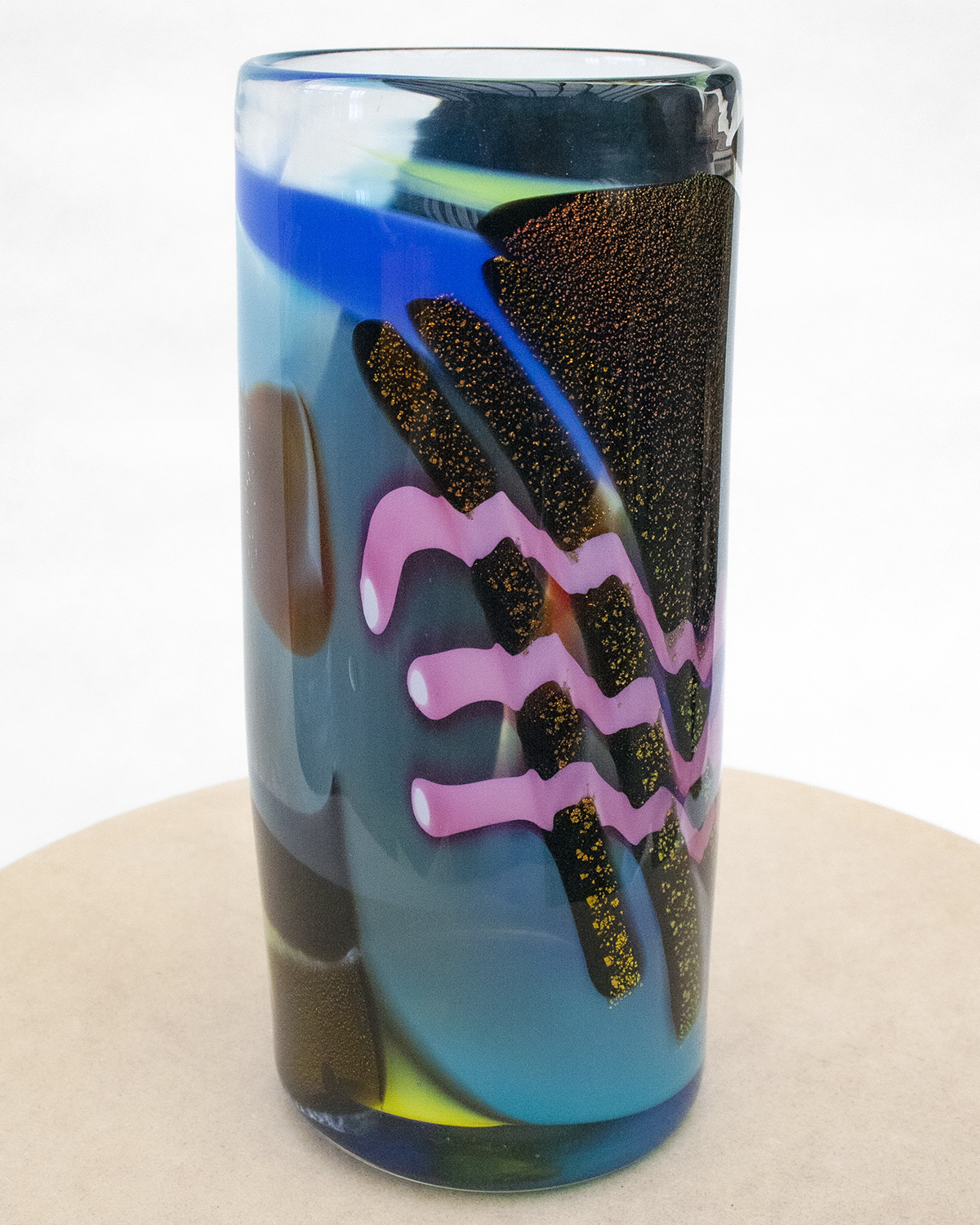
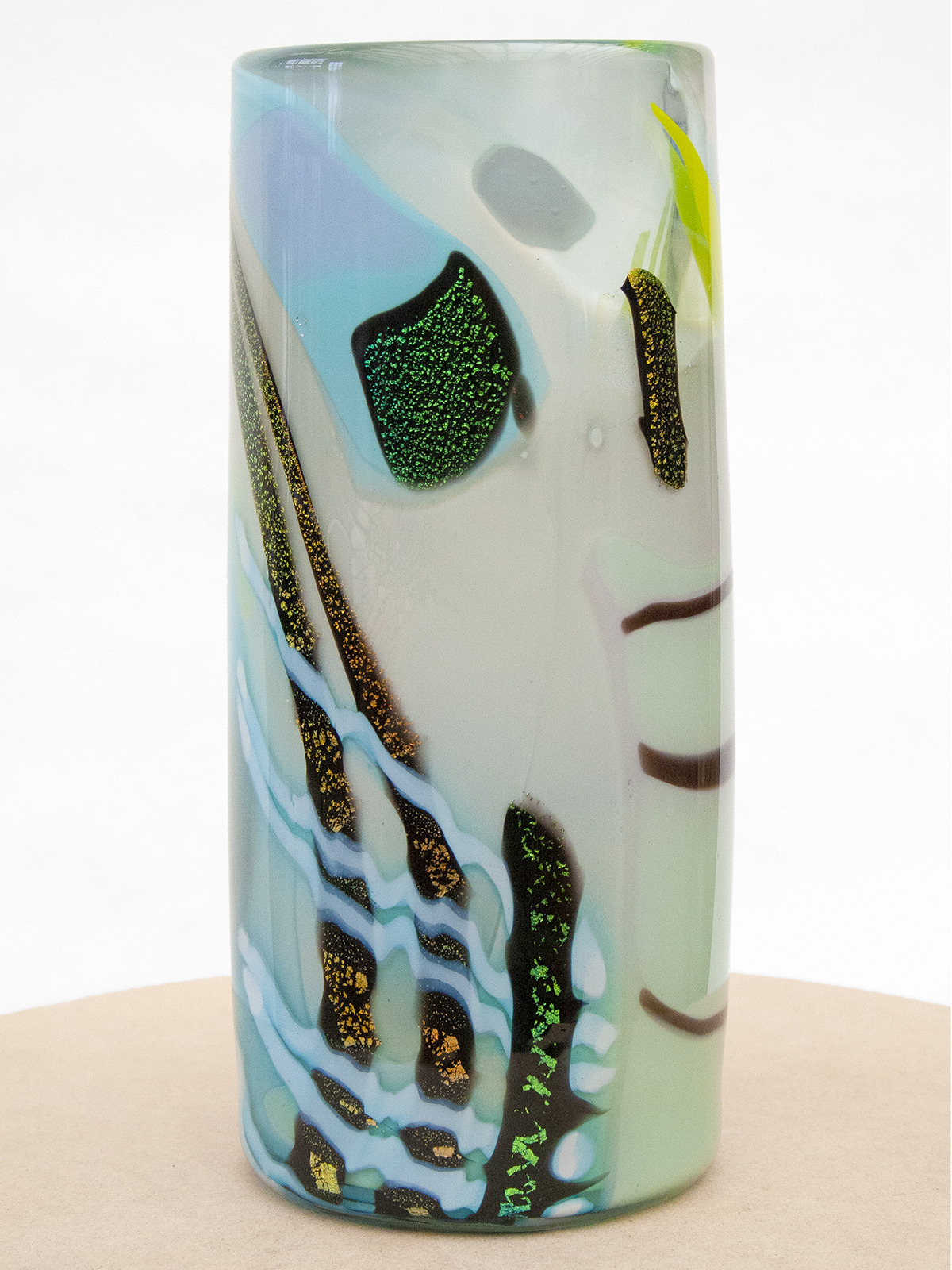
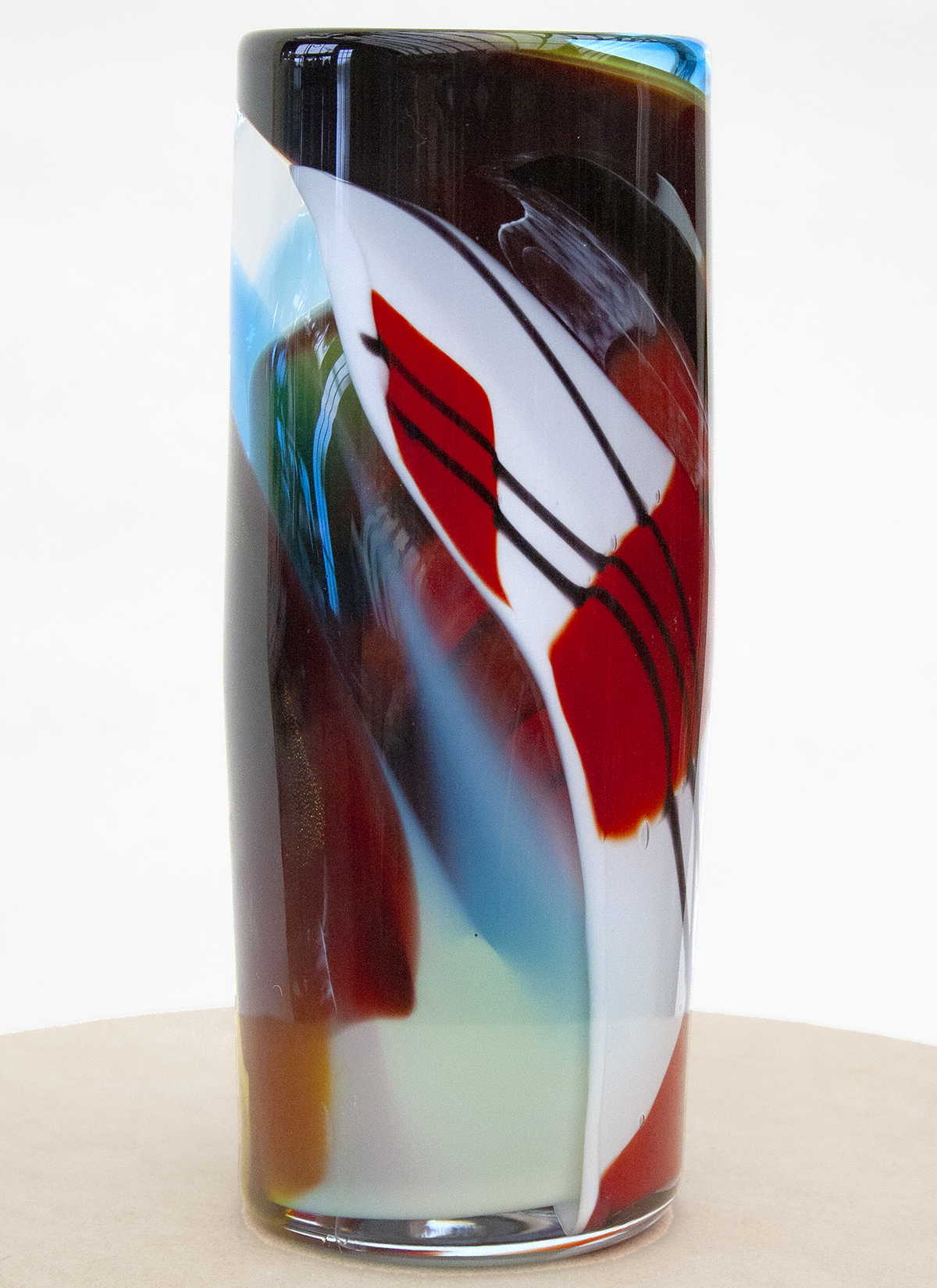
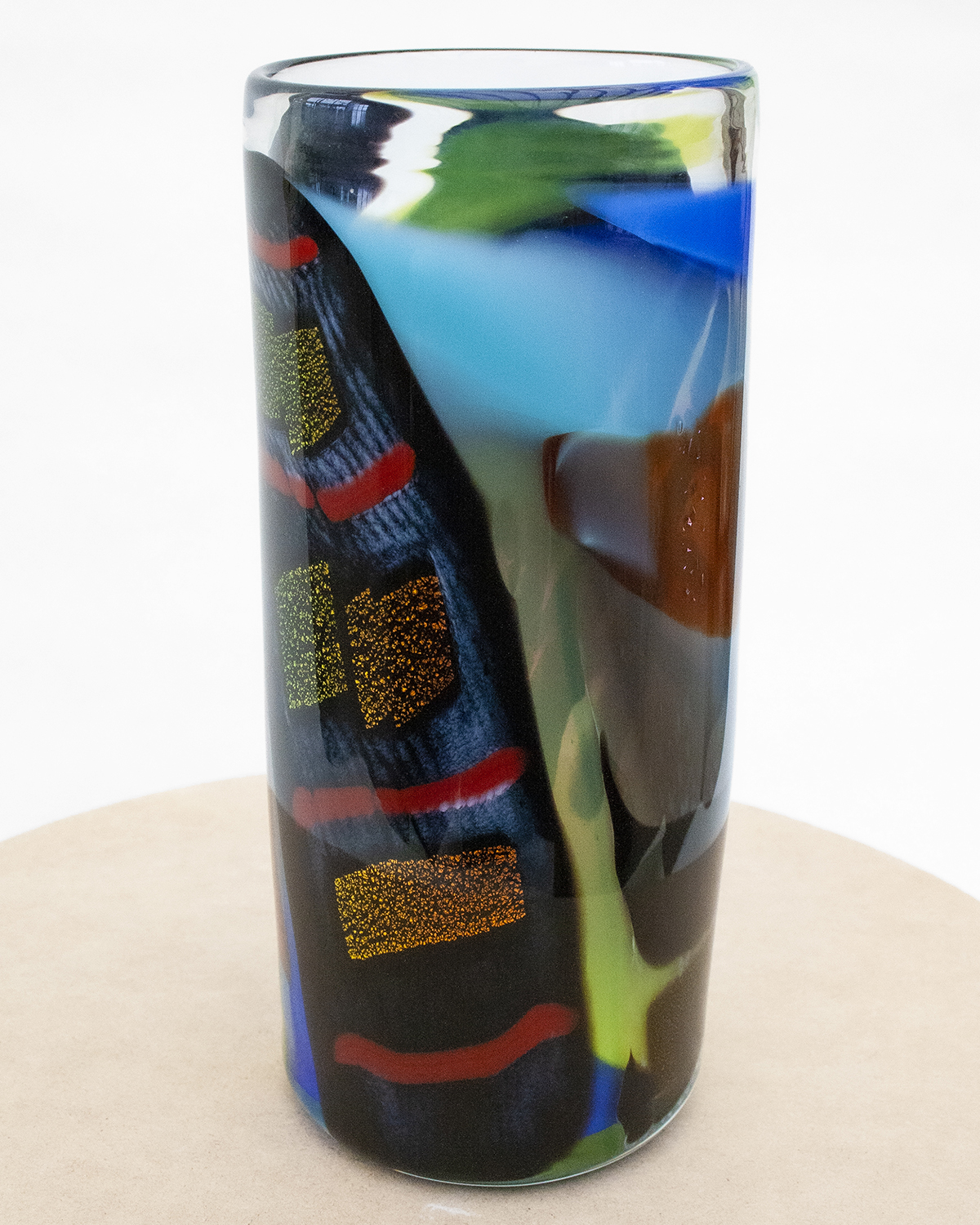
Nassau series
The color and decorative finishes are incredibly fun and enchanting. It’s like a painting.
Right now, we have two color palettes going on. We have these really lush, gem tone, wavy…I don’t even know how to describe it, but those are the colors that my dad makes from scratch —greens and blues and yellows. And then we have the more brightly colorful stuff. That started out of two different ways of thinking about our materials. We had a bunch of barrels of factory cullet lying around. My parents used to buy it from the Fenton Glass Factory. Sometimes it would be a barrel of little baby ducks with all their beaks broken or a barrel of Santa Clauses [laughs]. I was like, we’ve got a thousand pounds of this pink, why don’t we melt it? My dad doesn’t like working in one color, he really likes putting a lot of decorative elements on them. But I was just looking at this barrel like, this is the pink that everybody loves! We need to use it!
This is what became the Rosé Pink Bubble vase series?
The bubbly ones, yeah. I knew that baking soda could make bubbles, so I was like, can we work with baking soda? And he was like, “Hmmmmmm. Okayyyyyyy.” [Laughs].
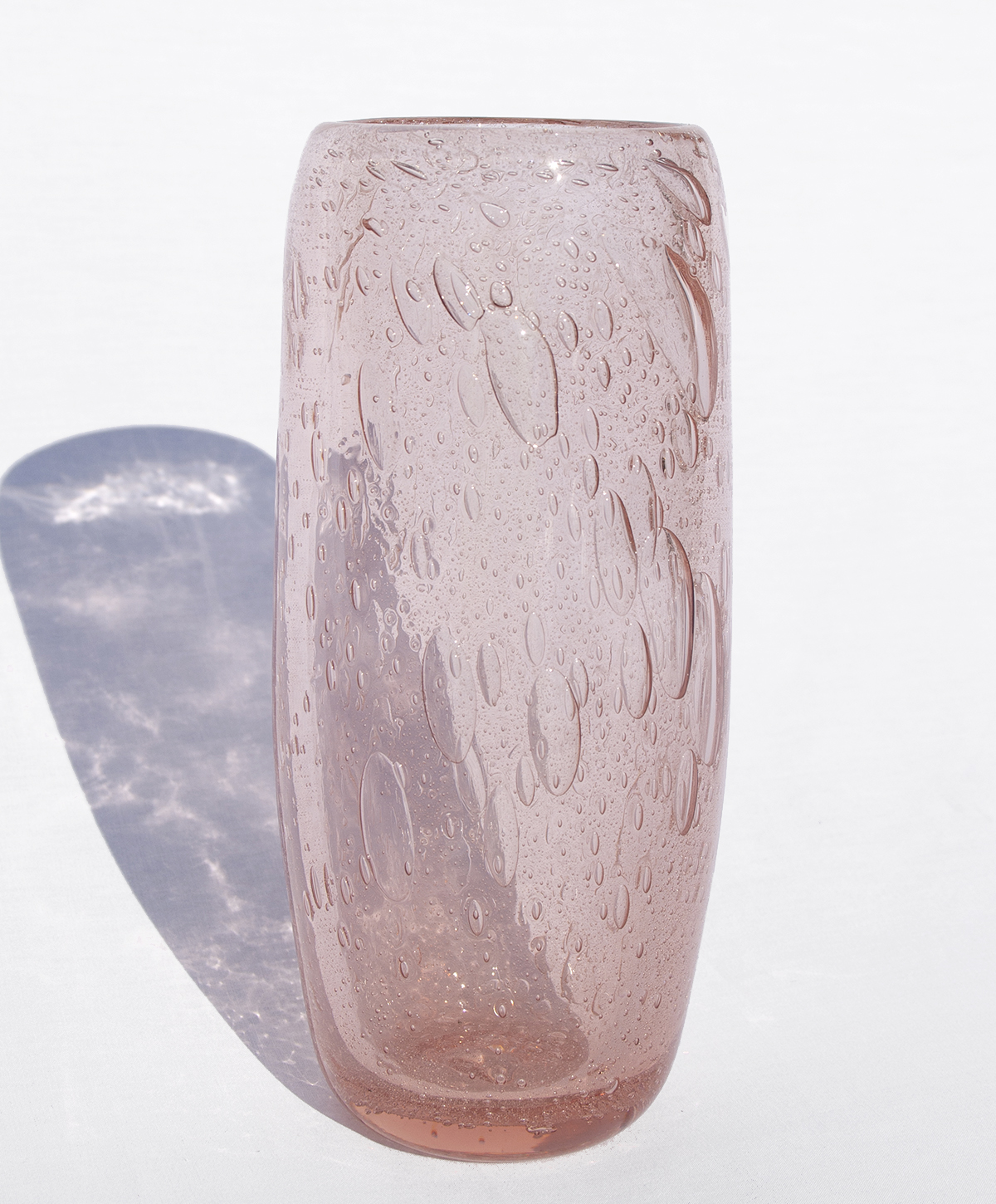
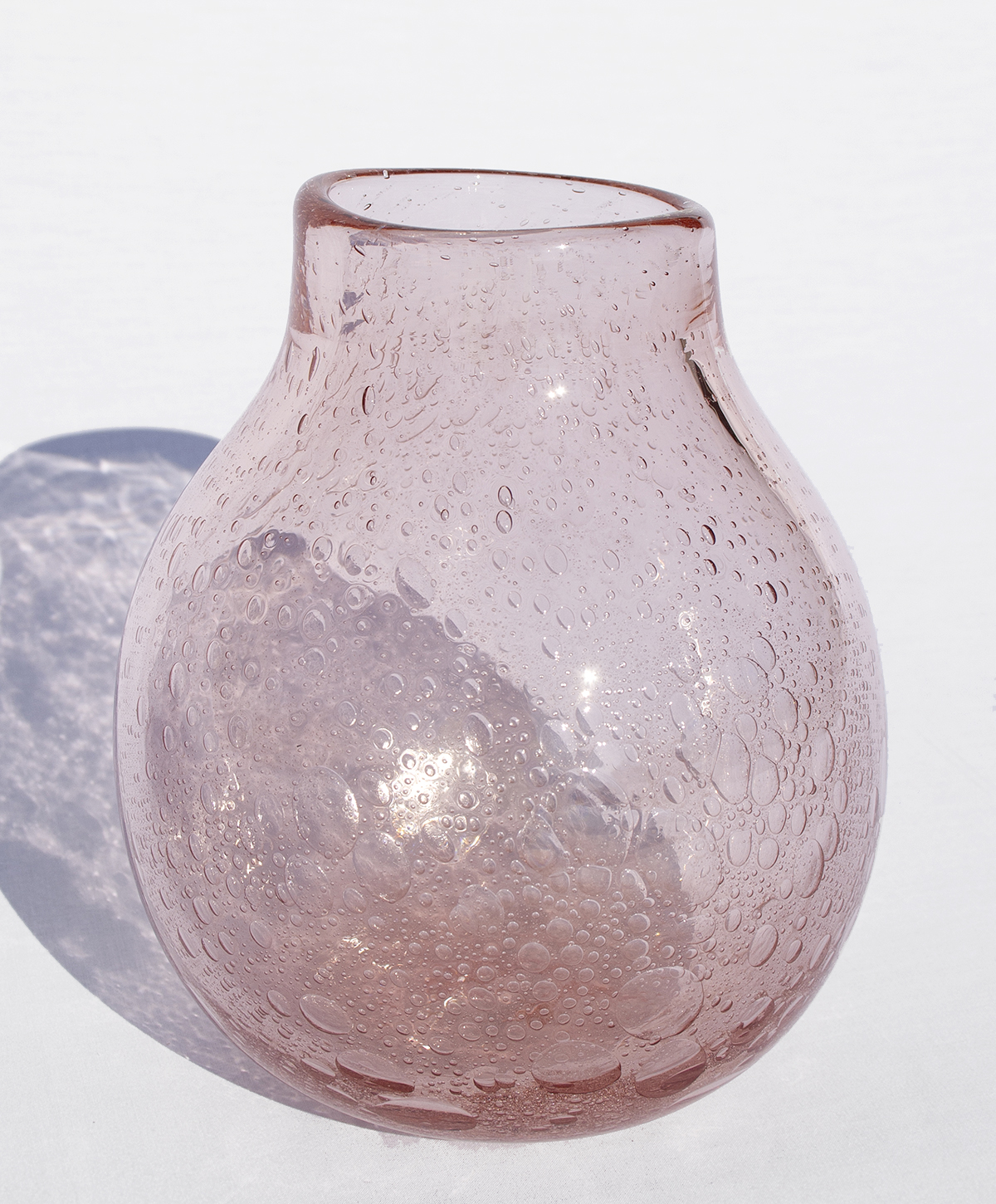
Rosé Bubbles series
I love how you have revitalized your dad’s practice and found a way to collaborate across generations.
He does what he likes and he’s got his aesthetic, and I really like his aesthetic. But then as soon as something sells, he’ll get excited about it and be like, “Okay, I do like that now.” But with the really colorful stuff, that was a fun story. There’s a glassmaker that lives up the road who handed a bunch of boxes to my dad of all these off-cuts, with the idea of inspiring him to do something different, and they were just sitting there. It’s this beautiful box of colorful bits of glass, and some of them are dichroic, which is almost holographic. They’re sparkly and they change color when you move the piece.
So, I started bugging him. I was really inspired by these two artists who live in Toronto on a street I used to live on, Nassau Street in Kensington Market. One is my friend Sandy Plotnikoff who works with hot foiling, and he has this really robust practice of reintegrating discarded materials from other projects. I really liked that practice of reusing materials. So that collaboration became the Nassau series, which started with some vases and cups about five or six years ago. That was really fun to work with because it feels like you’re a crow, picking out little bits and putting them down. I’ll say, “Dad, you’ve got to make a vase that looks like this.” Or I’ll show him a shape, and sometimes it’s hard to make it that shape because the chunks are different sizes and they’re melting at different rates and it’s moving around the piece as you’re doing it. I’m like, it’s getting kind of weird, but it’s good-weird!
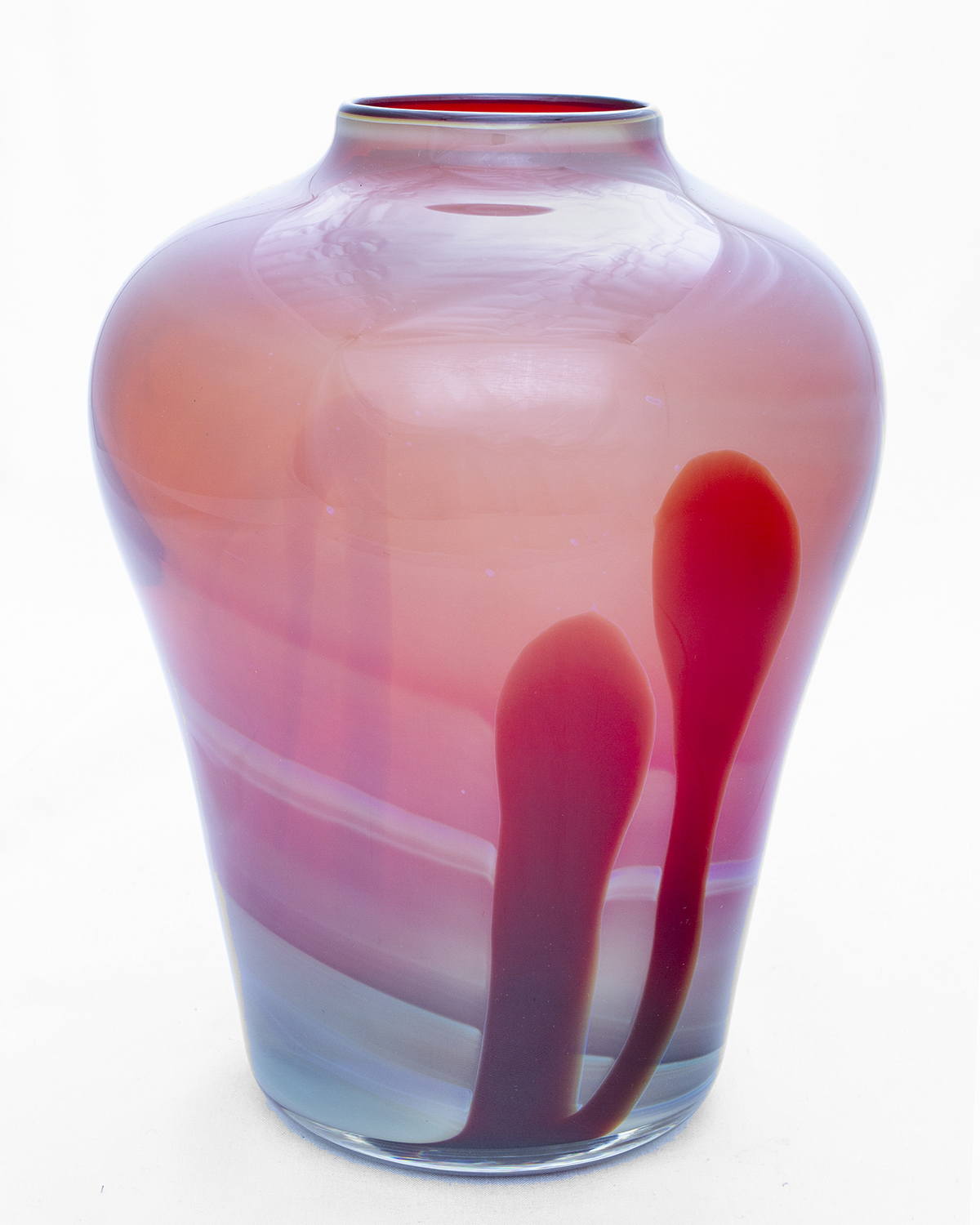
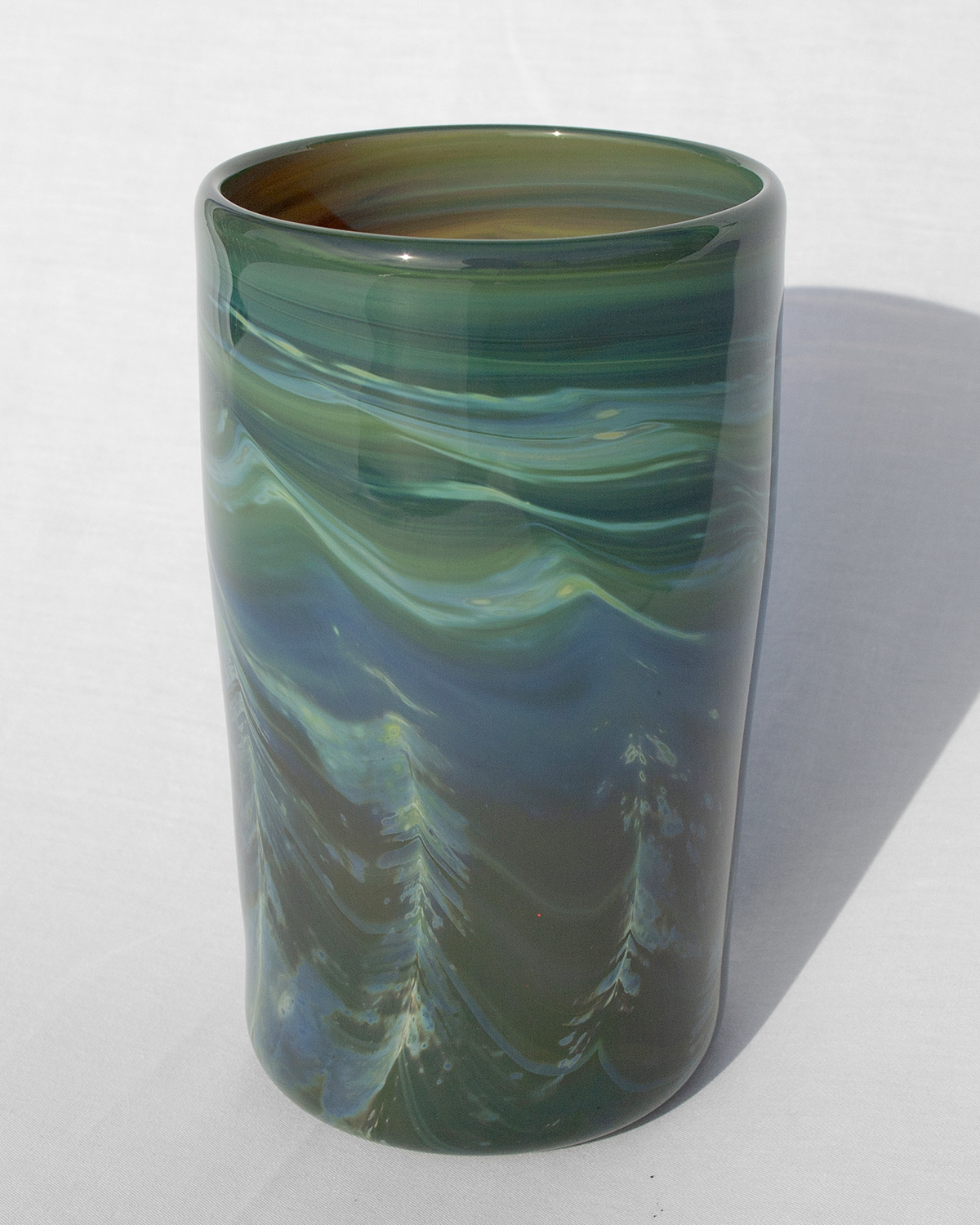
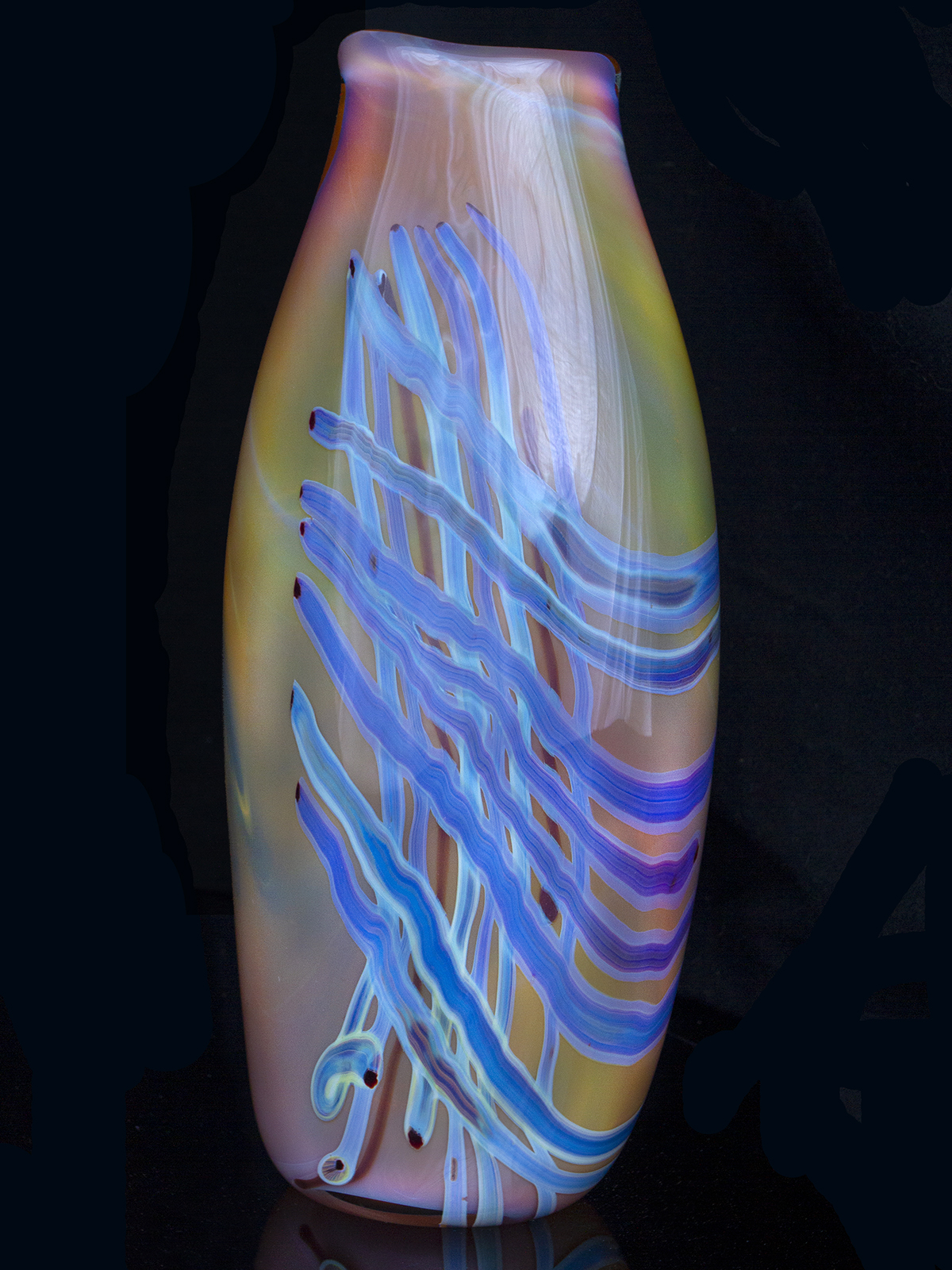
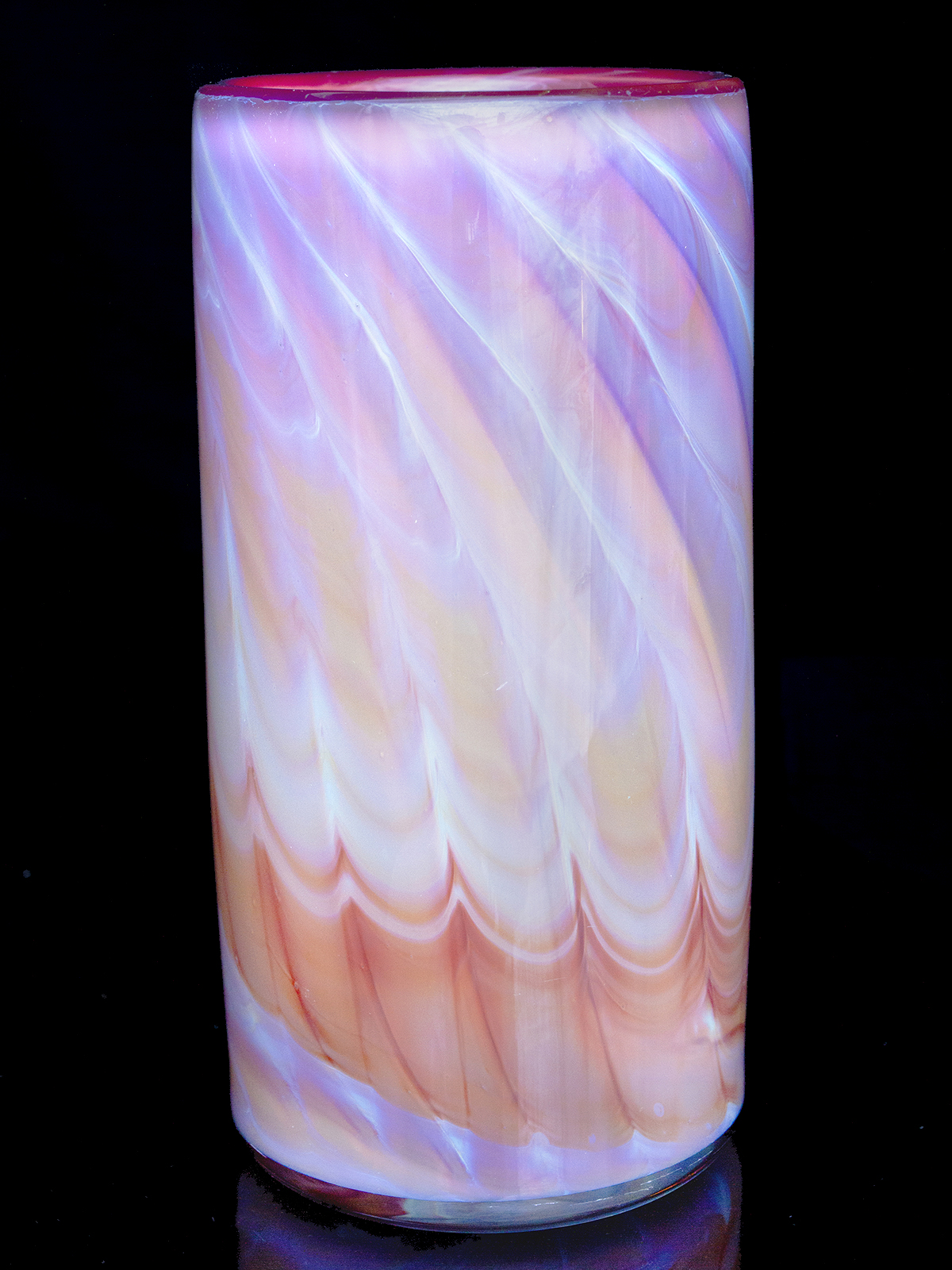
It’s very physical work. It’s almost like a dance.
It is. There’s time and there’s heat. So, you’ve got to get out of the way, and then it’s moving by itself.
What’s so special about glass and your dad’s glass in particular is the way it interacts with light, refracting and reflecting. And there are so many variables in terms of transparency and the quality of the glass.
That’s very true. It still manages to like shock me most of the time. I photograph all the glass, and it’s one of these things where, sometimes I’m just waiting for a sunny day because you’ll be looking at something like, Oh, it’s so moody, and it’s got such dark deepness. And then as soon as broad daylight hits it, you’re like, this is a Technicolor…I don’t know what it is! When you’re working with silver glass, which is primarily what my dad works with, the reason it’s used in photography is because it has a photochemical reaction. And when you’re putting it through heat in furnaces, that’s why it changes all these different colors. But there’s something about that color specifically, when light hits it, it’s just so vibrant. It’s kind of unreal.
When we’re working with the clear glass and the Nassau stuff, a lot of those colors are quite bright and opaque. But when we’re working with the dichroic colors, you’re encasing something in an optically clear thing that’s magnifying the light play. It’s still quite mesmerizing for me. I have far too much of my own glass because I’ll just be in there and take something and be like, “This one’s mine now!”
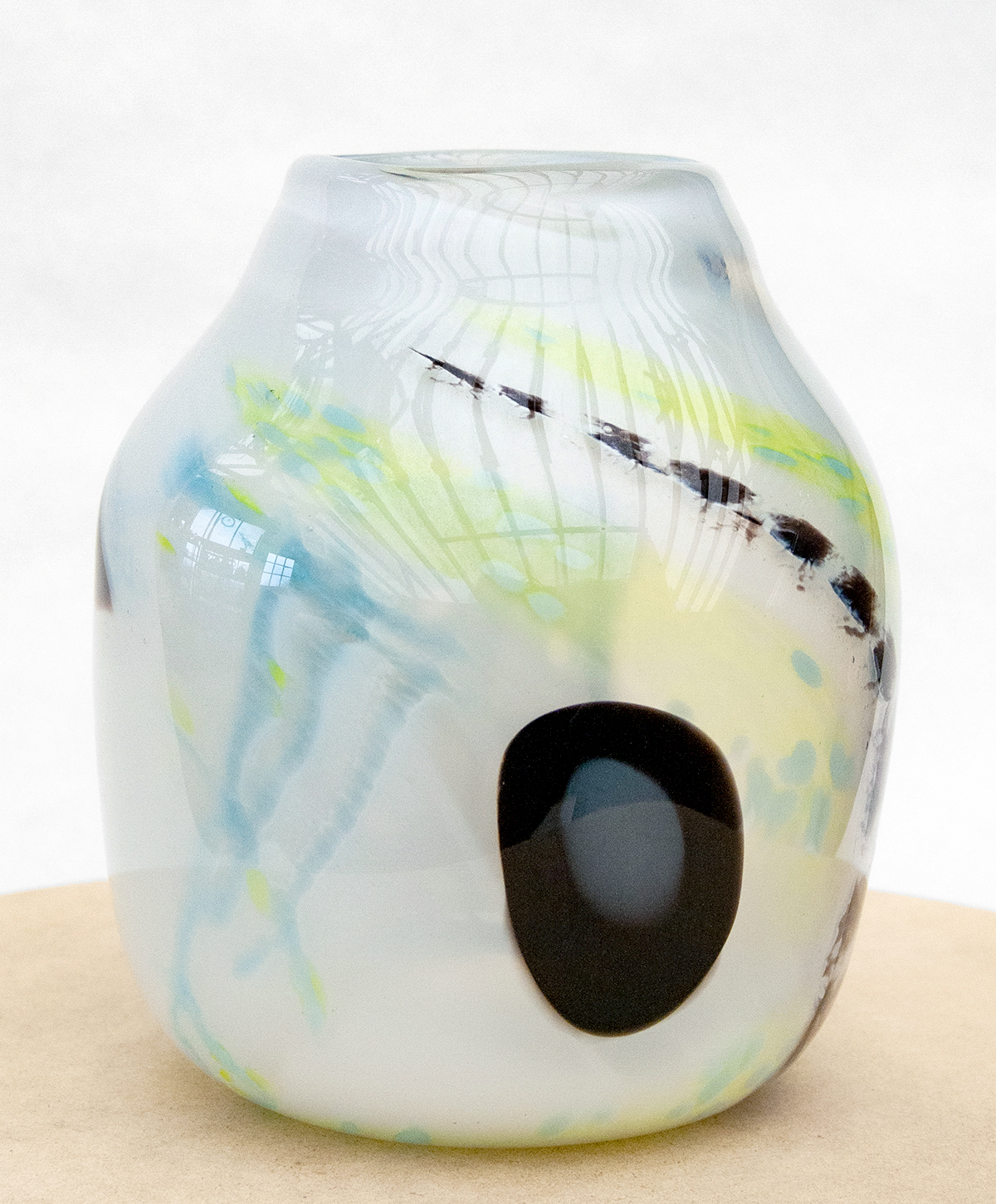
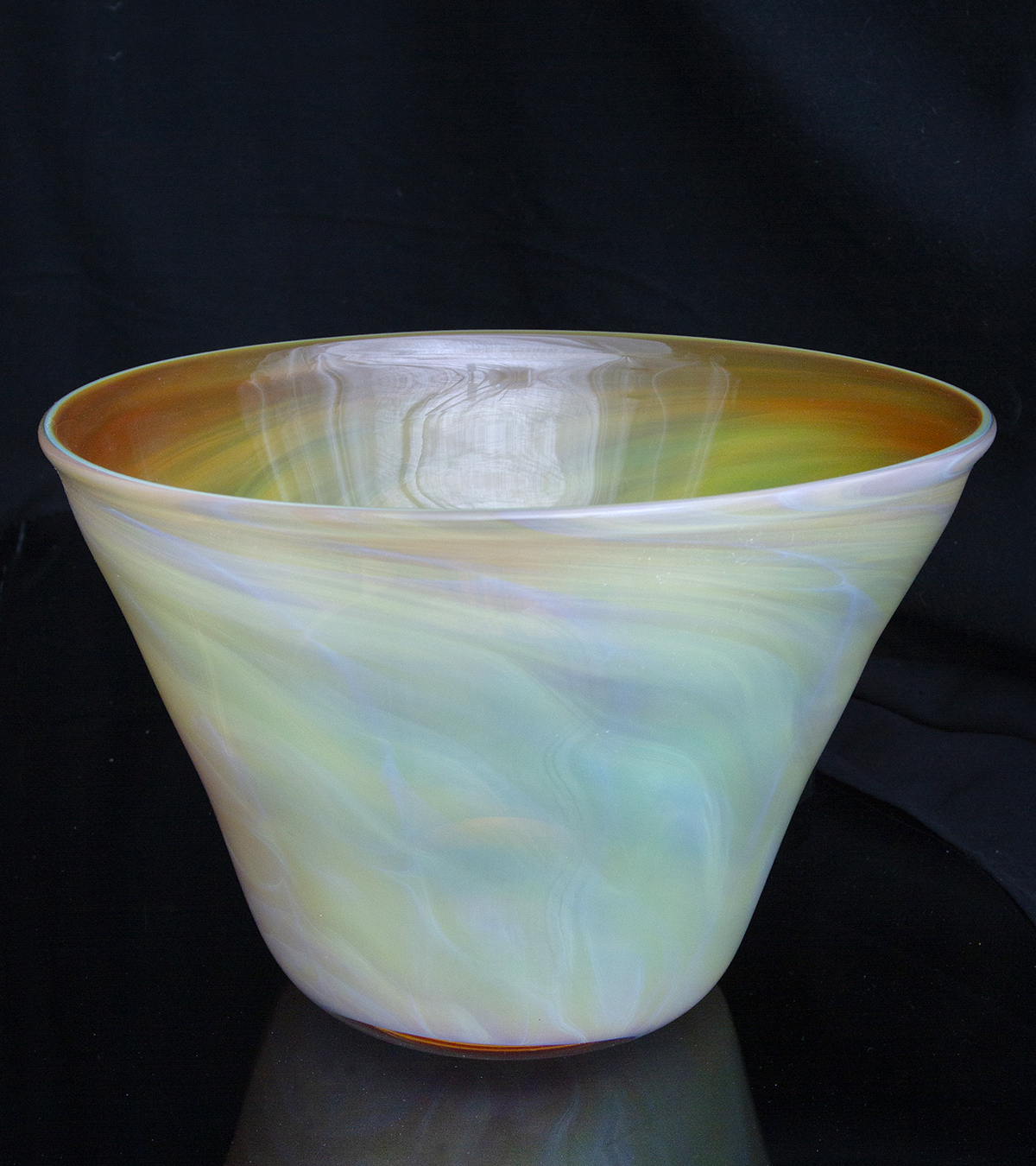
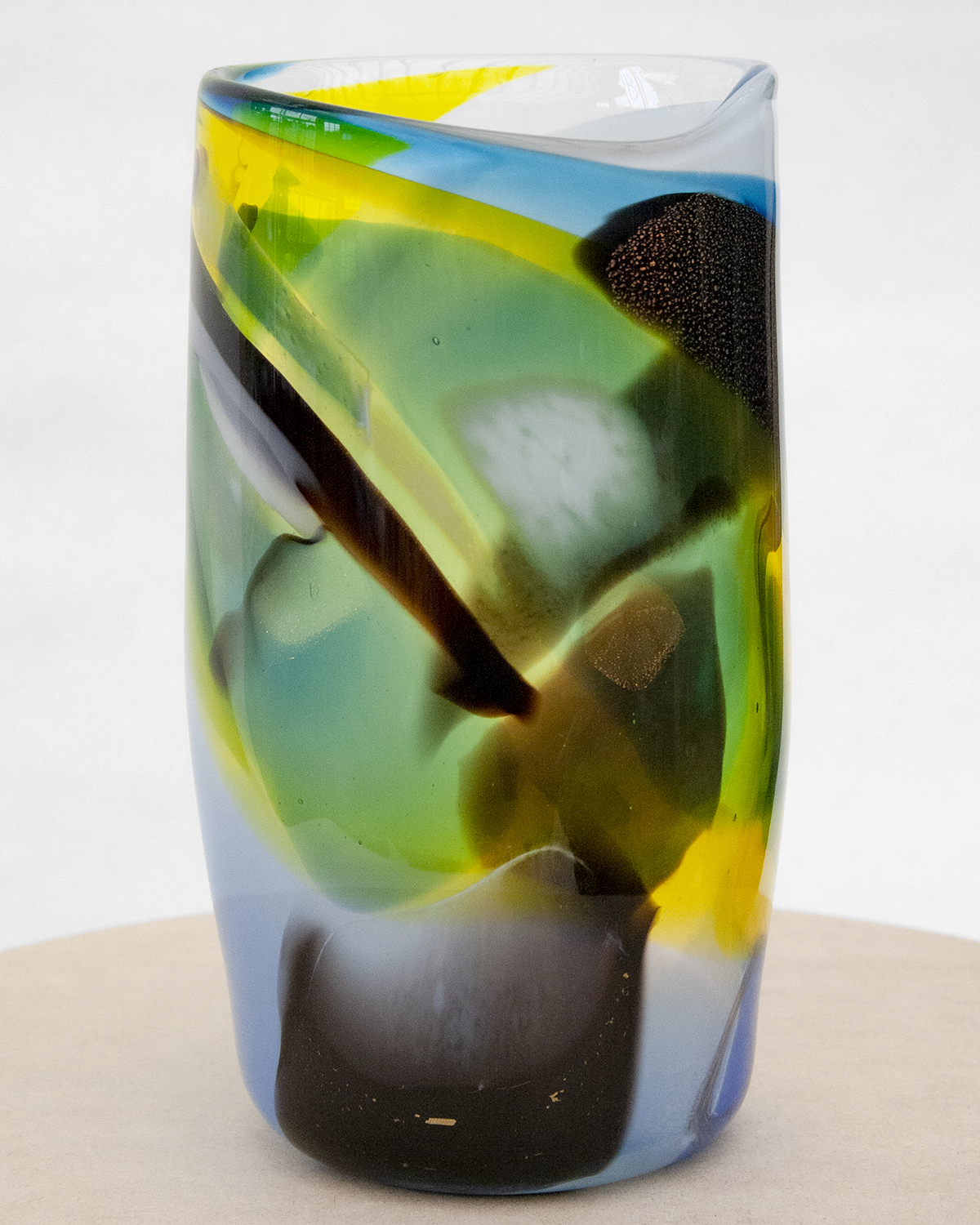
I wanted to ask about the next generation. You mentioned that you’re working on collaborations, residencies, perhaps having your dad teach. How do you see the business evolving?
One of the main reasons I got involved in managing was because it dawned on me that the resources that were around when I grew up just aren’t available in that way for our generation. And the facilities at my dad’s are just insane. There aren’t many people my age that can afford to open a private studio that large — it’s a very big facility that’s kind of unheard of. And a lot of the ones from my dad’s generation have closed because they’ve retired. In the back of my head was, if I ever decide just to just fuck off from life and become a sculptor, I could, because it’s all there. And seeing what my dad knows and seeing what isn’t a resource anymore, like learning how to make your own color from scratch, there was this concern in the core of my being of, how does this information get passed down? I know some of it but I’m not going to become a glassmaker, so who’s going to do this?
My dad’s a bit of a hermit, so it’s been a slow process. We’re rebuilding our furnaces and trying to get to the point where we can bring more people in. When young glassmakers are working in a studio, sometimes they get access to making their own work for floor time, but glass making studios are like $600 a day to rent. So, it’s something that, to me, could be more accessible to people that don’t have that access normally. The interest has definitely taken off in the last five years, and we always get people asking about classes. I think eventually, if my dad’s doing classes, it’d be for an intermediate level. He’s like, “I don’t want beginners getting up in my tools.” [Laughs]. Which is fair. But what has worked really well is we’ve done a few residency scenarios. Kelly Akashi, a friend of mine and a brilliant artist, she’s a glassmaker, she knows what she’s doing, and she came up for a week and it was great. She was really grateful to not have a bunch of dudes breathing down her neck. And my dad was just like, “Go for it! Just have fun.”
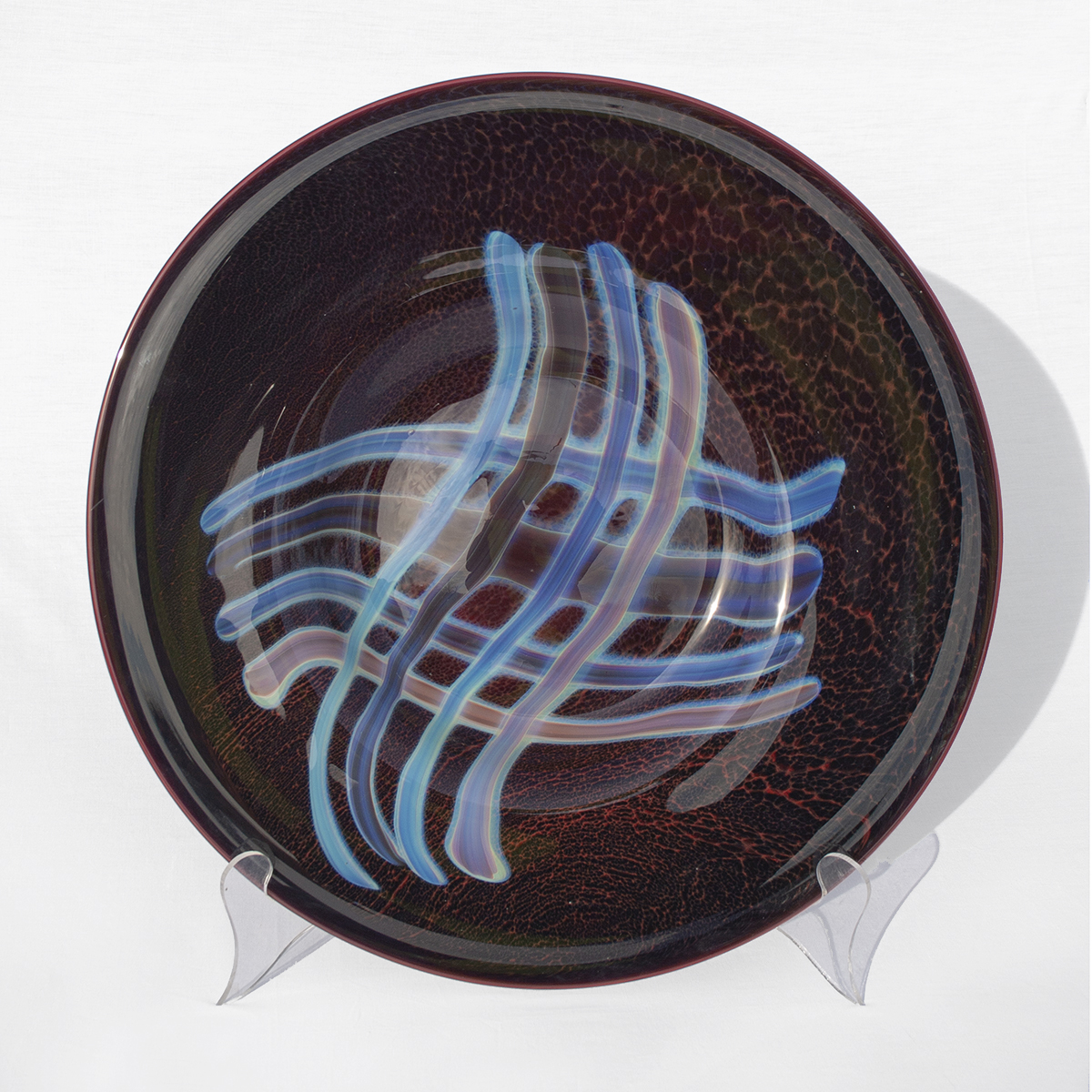
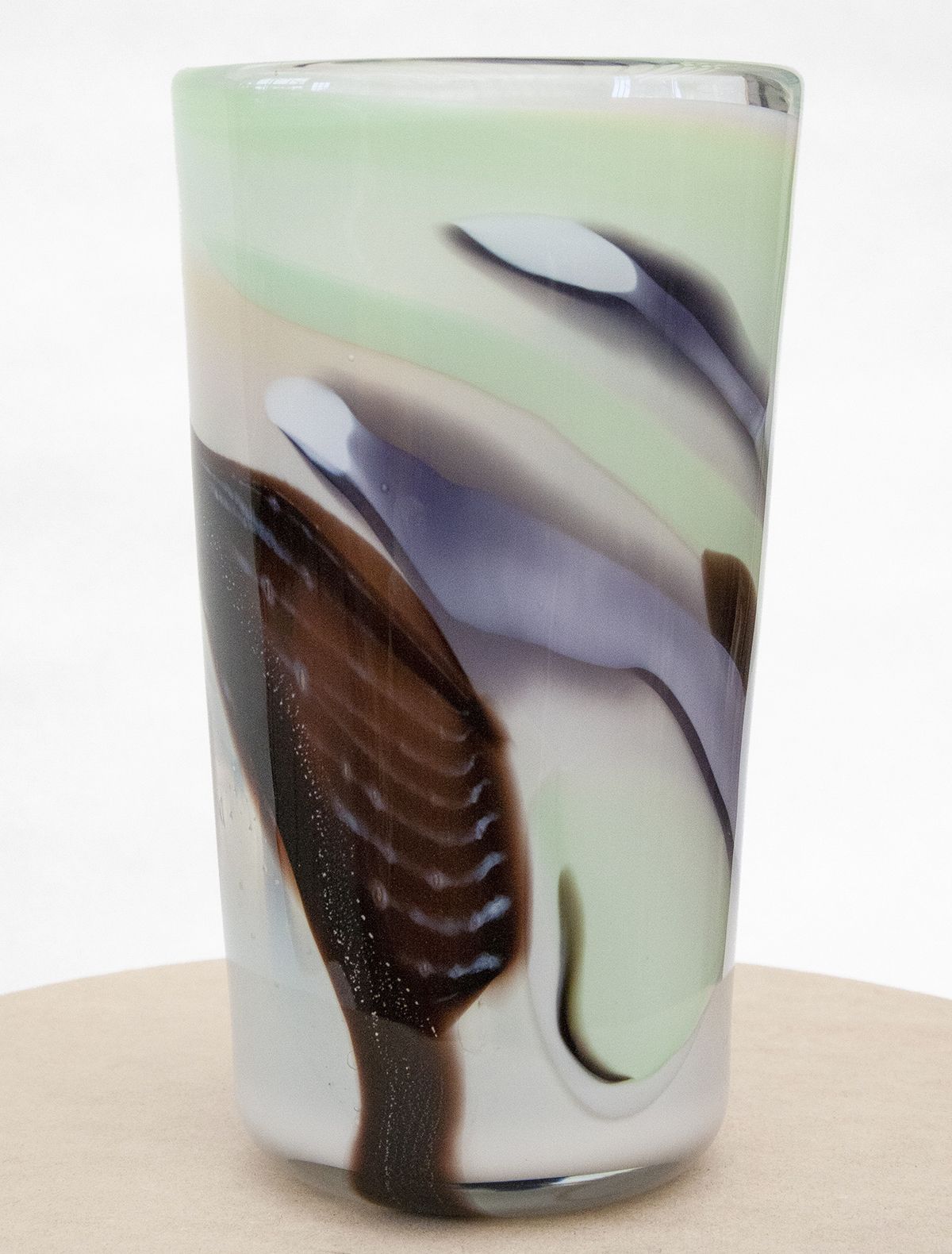
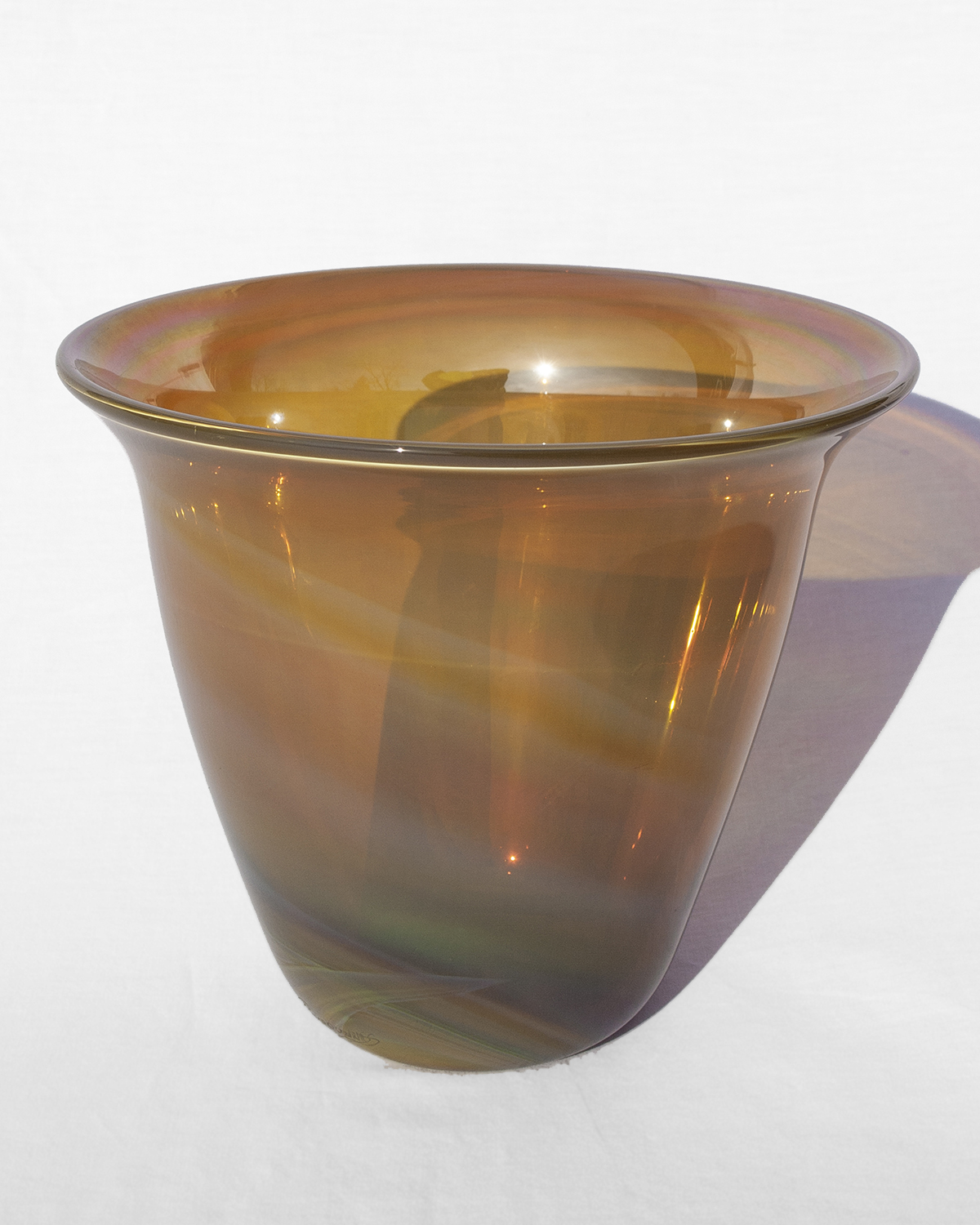
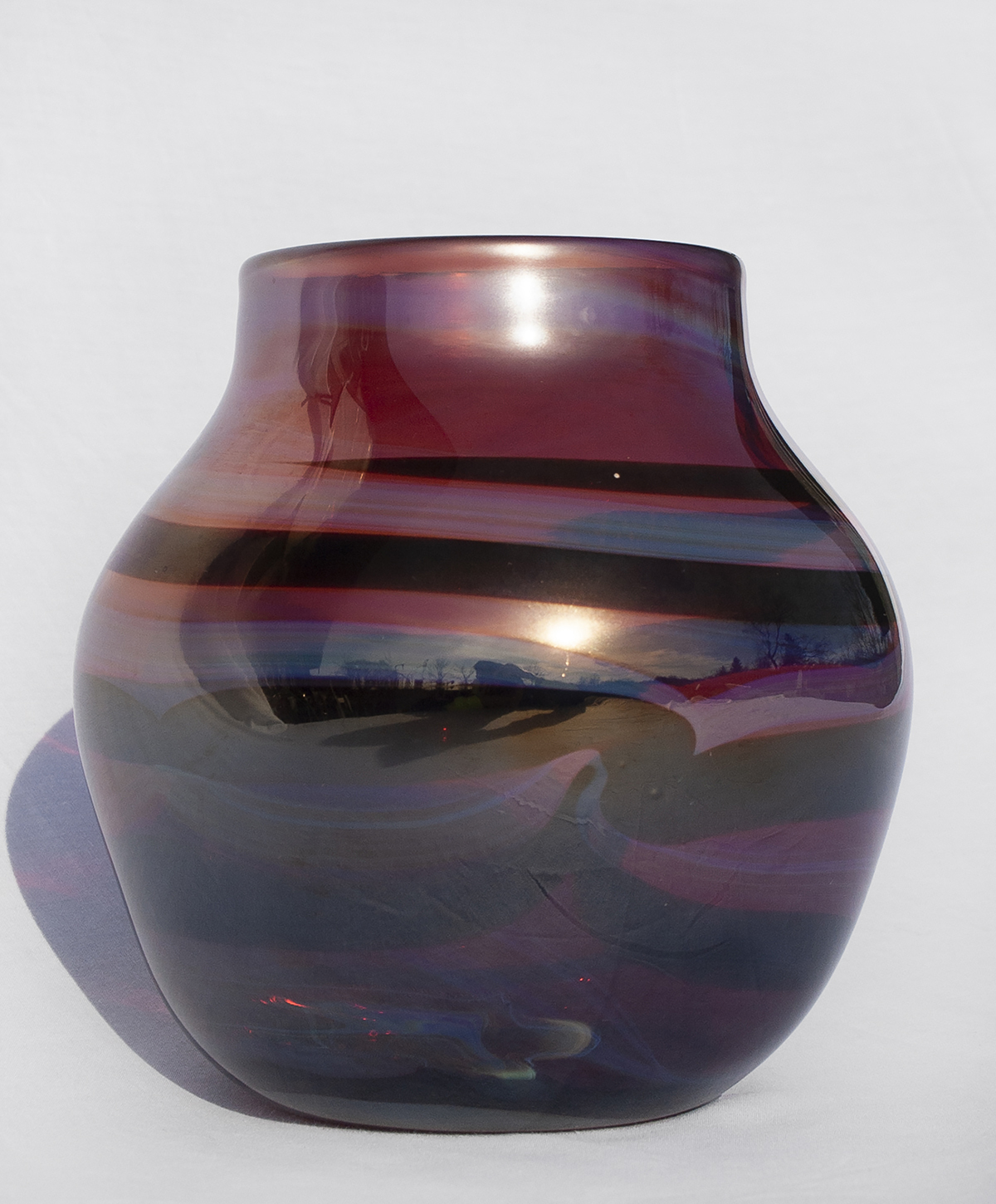
You also did a wonderful collaboration with the artist Marcel Alcalà.
Marcel, I knew from New York and he’s based in LA now. I love their work and they sent me some images to pull from. I was slumping lots of little pieces, emulating their work and trying to make these vessels that had elements of their motifs, which are these smiling and frowning daisies. With other people who are maybe glass aware, but not glass experienced, we’ve done some interesting collaborations where they can come in the studio and describe what they’re wanting to do. And it really becomes a true collaboration because it’s not like you can just fabricate exactly what somebody wants. We did one with my friend Seth Scriver, where he wanted to make these glass bottles and stamped coins.
What’s next for you?
I have plans for a small jewelry line somewhere down the line, based in glass. And in a dream world I’d love to work or collaborate with Joanne Burke, BY NYE, or Tetier Bijoux. On a larger scale, I really love the work of Elaine Cameron-Weir. Her use of neon is great, so I’d be interested in what she would do with blown glass. I’d also love to do conceptual glass work in the context of interior design, there’s a lot of functional and decorative applications for custom interiors that would be really exciting to work in.
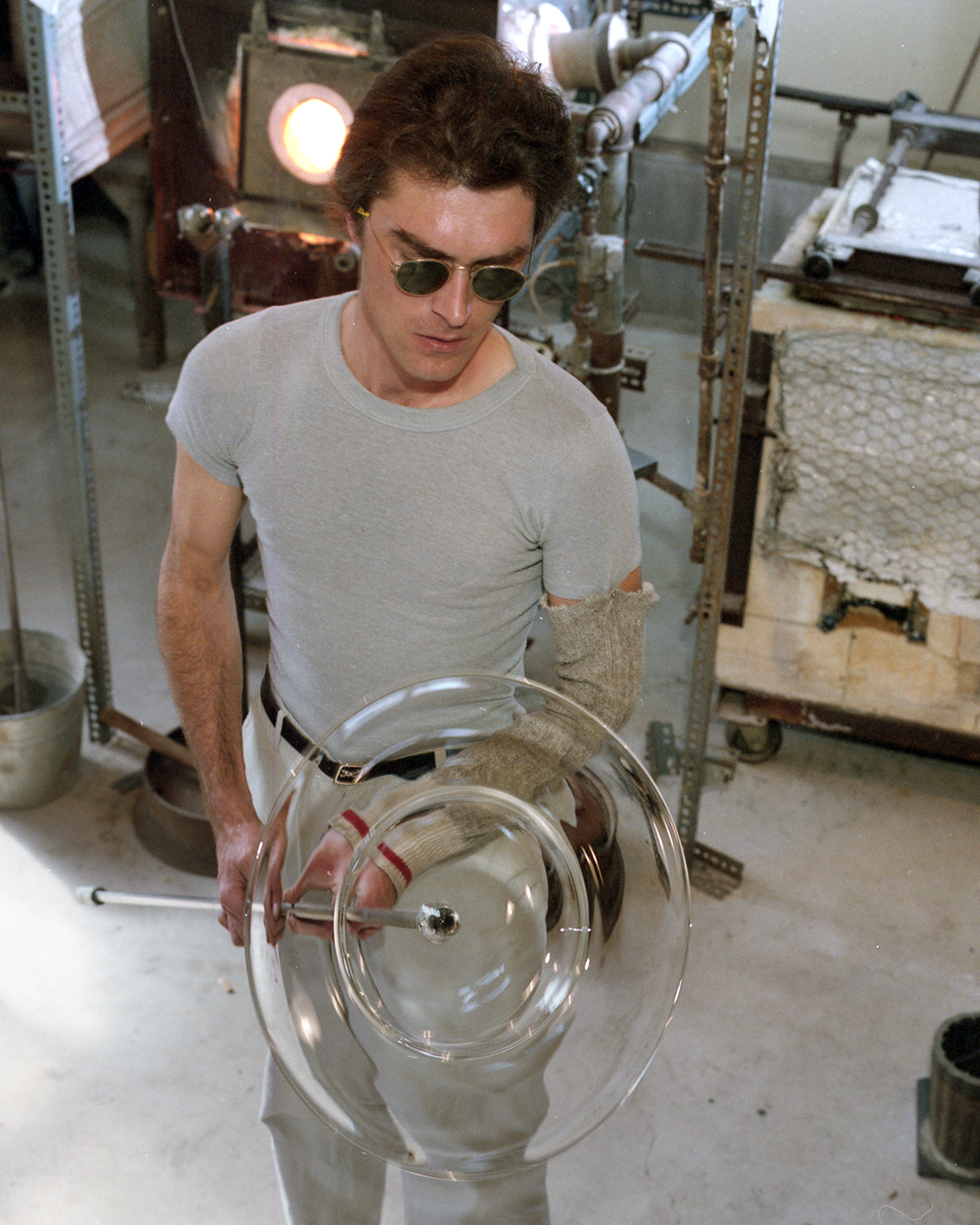
Peter in the ’70s
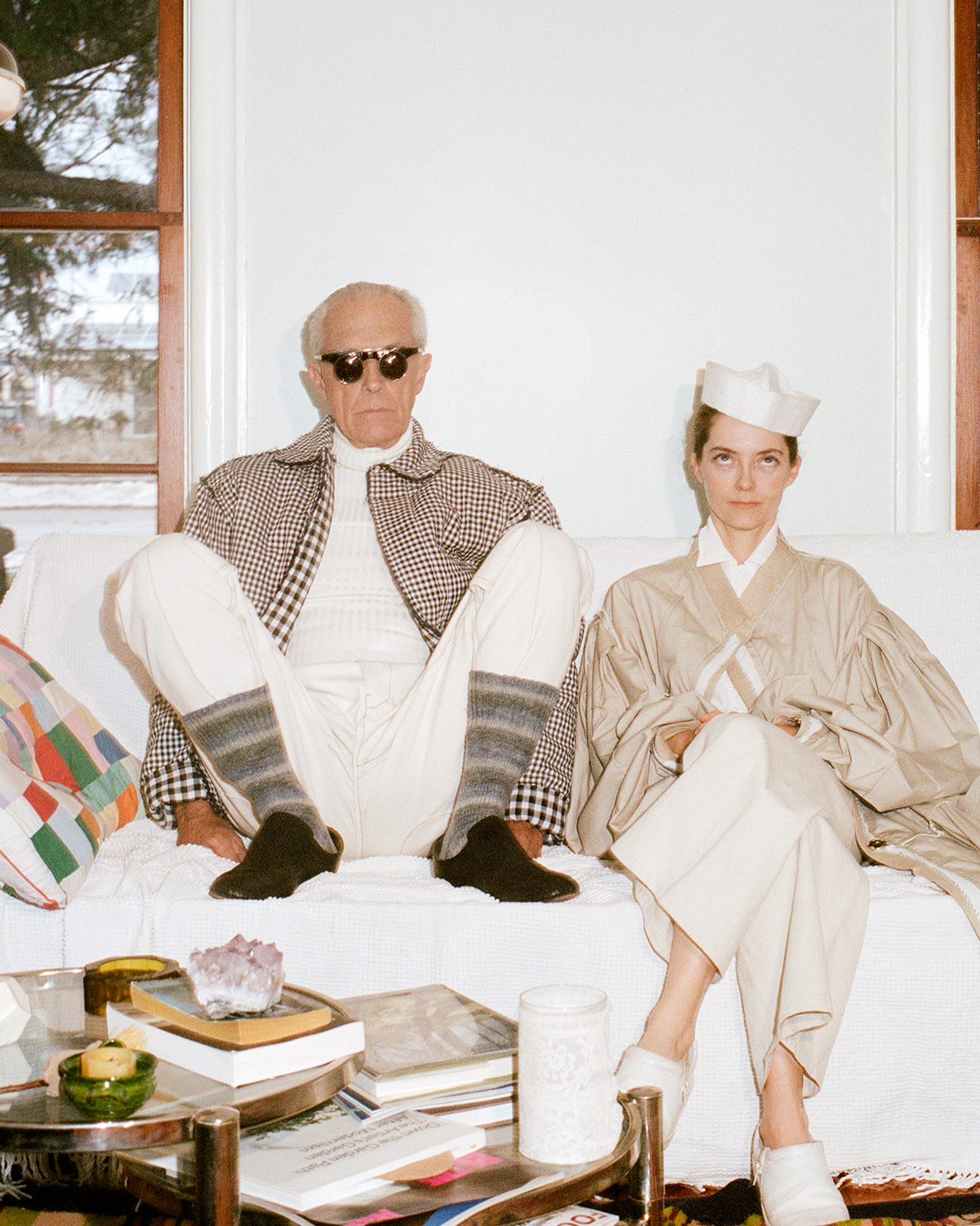 Peter and Iris now, portrait by Luna Khods
Peter and Iris now, portrait by Luna Khods
